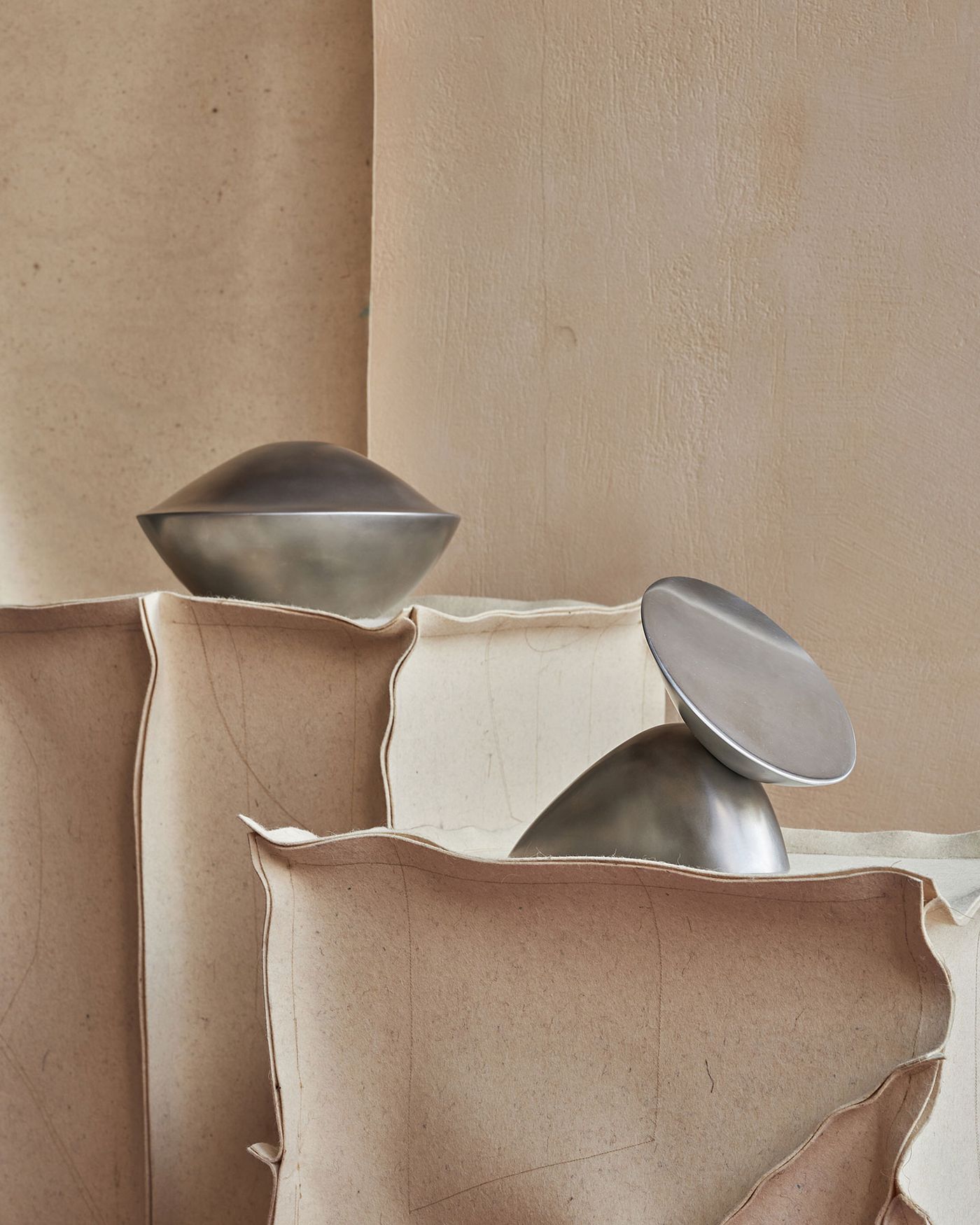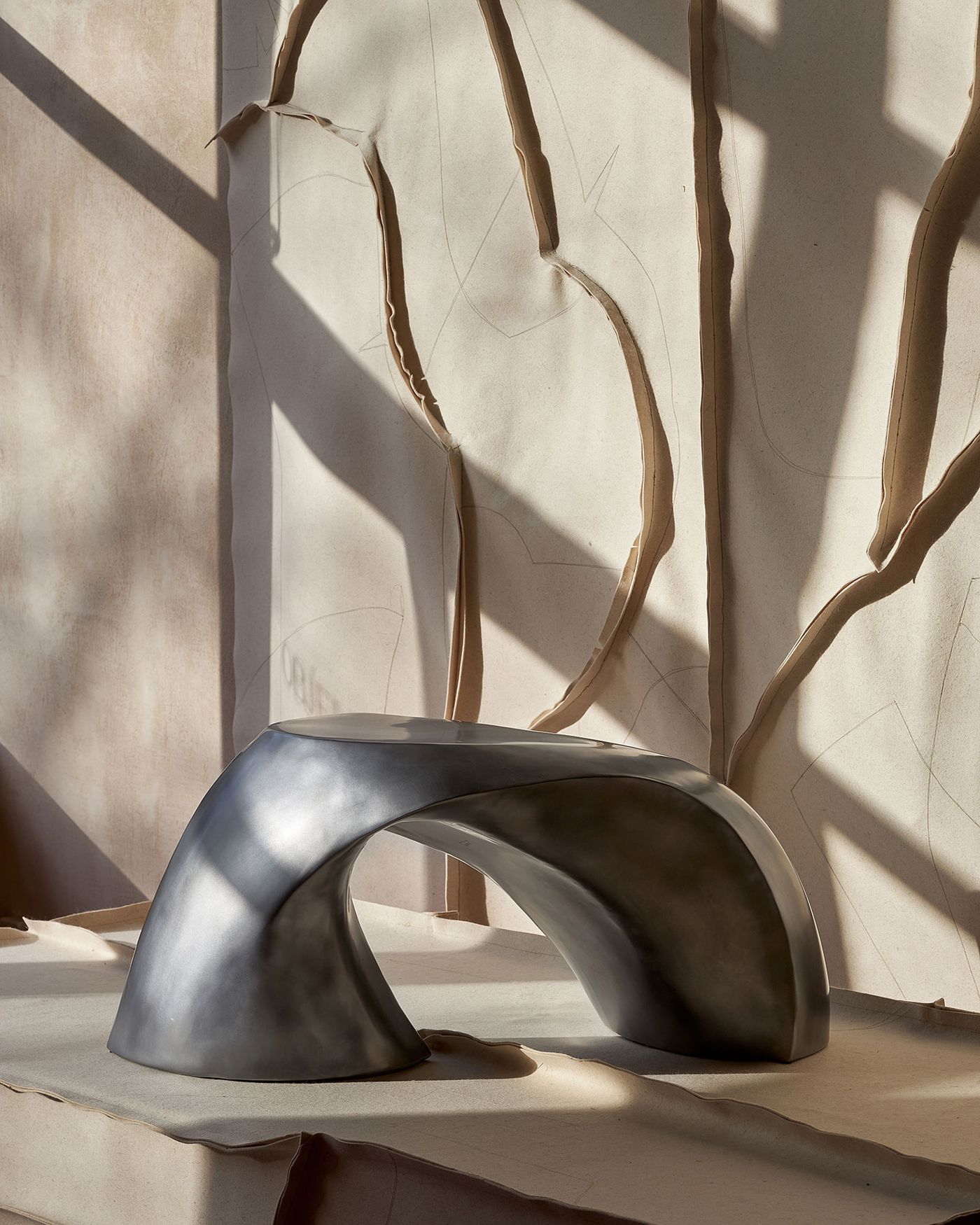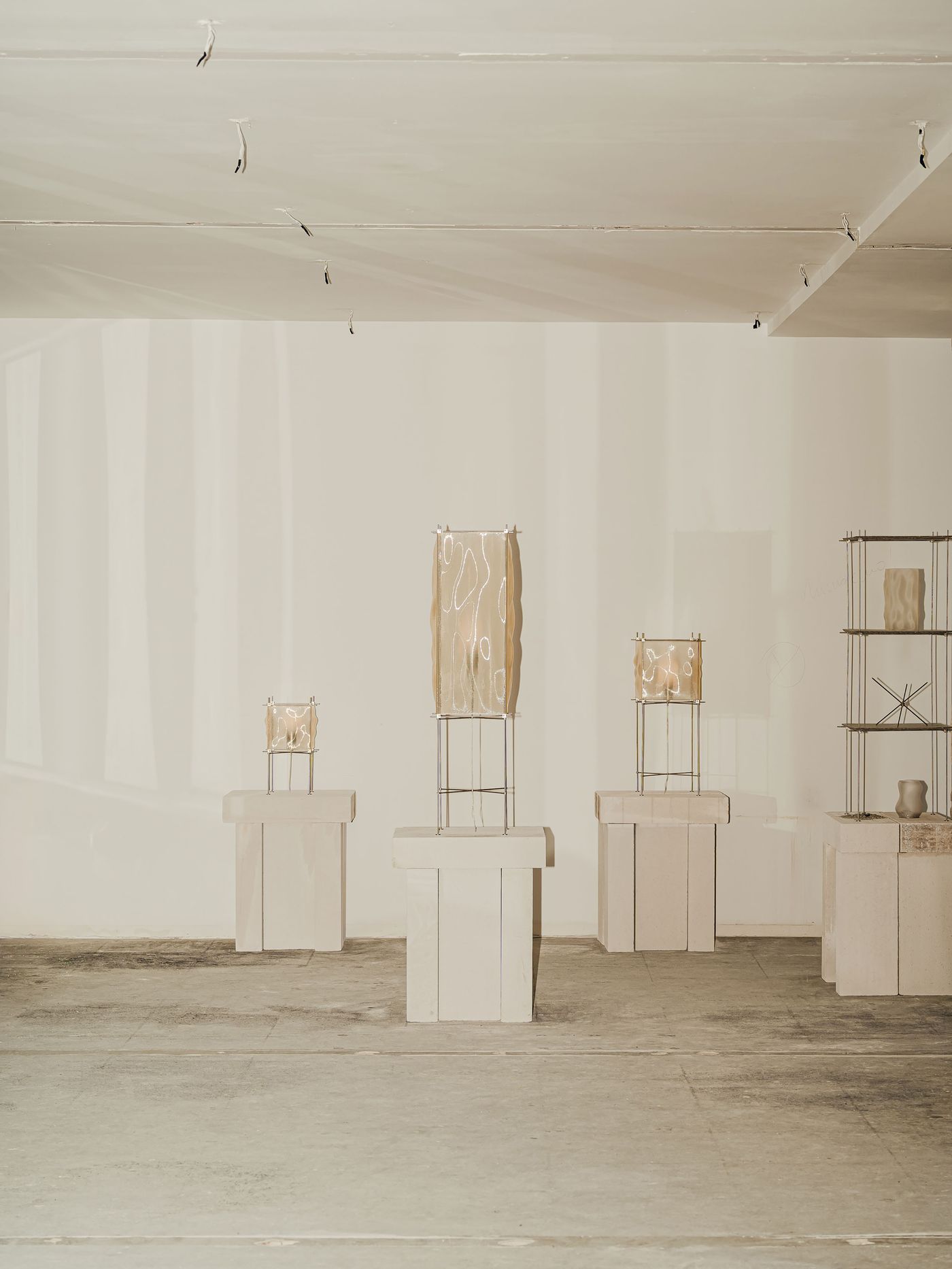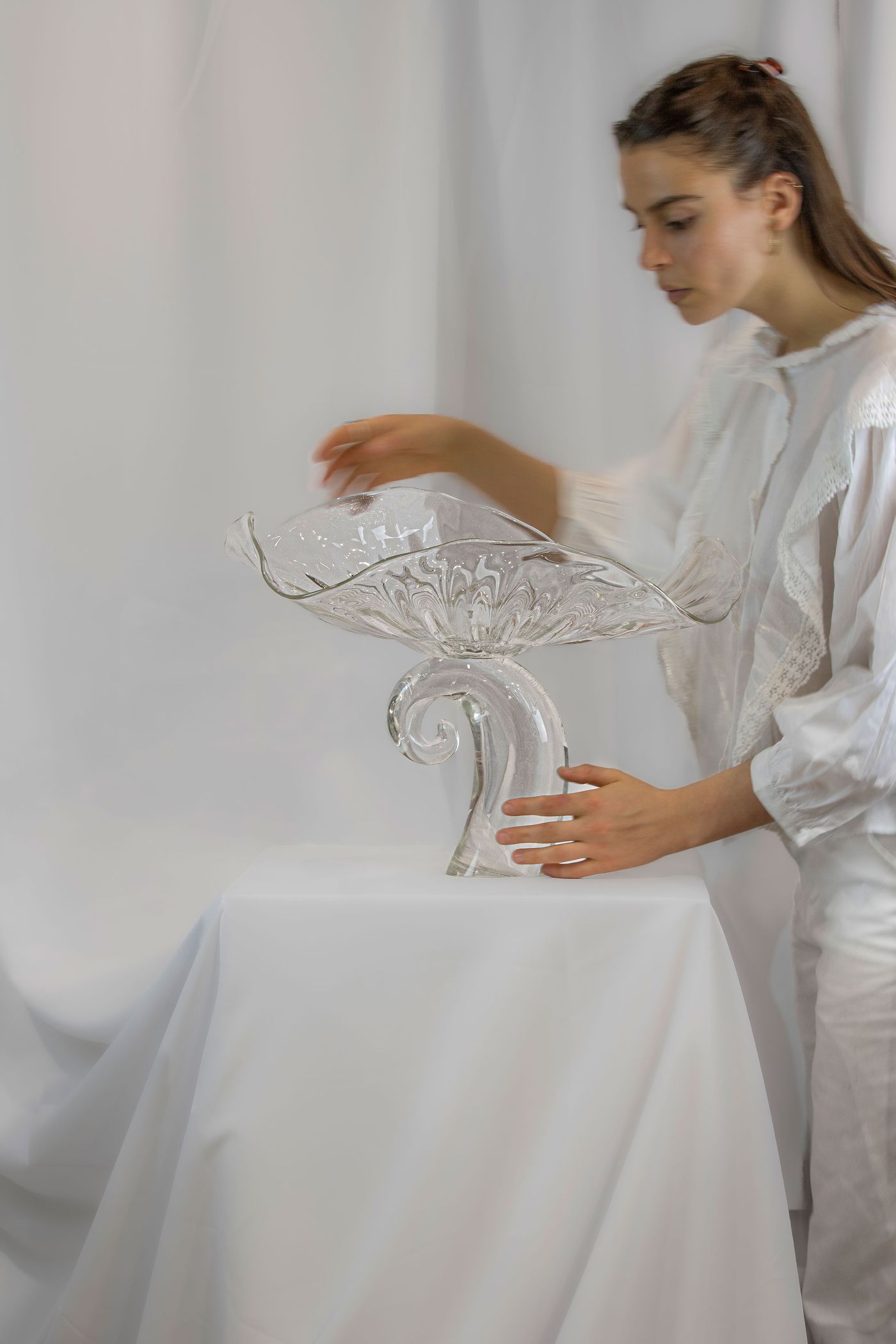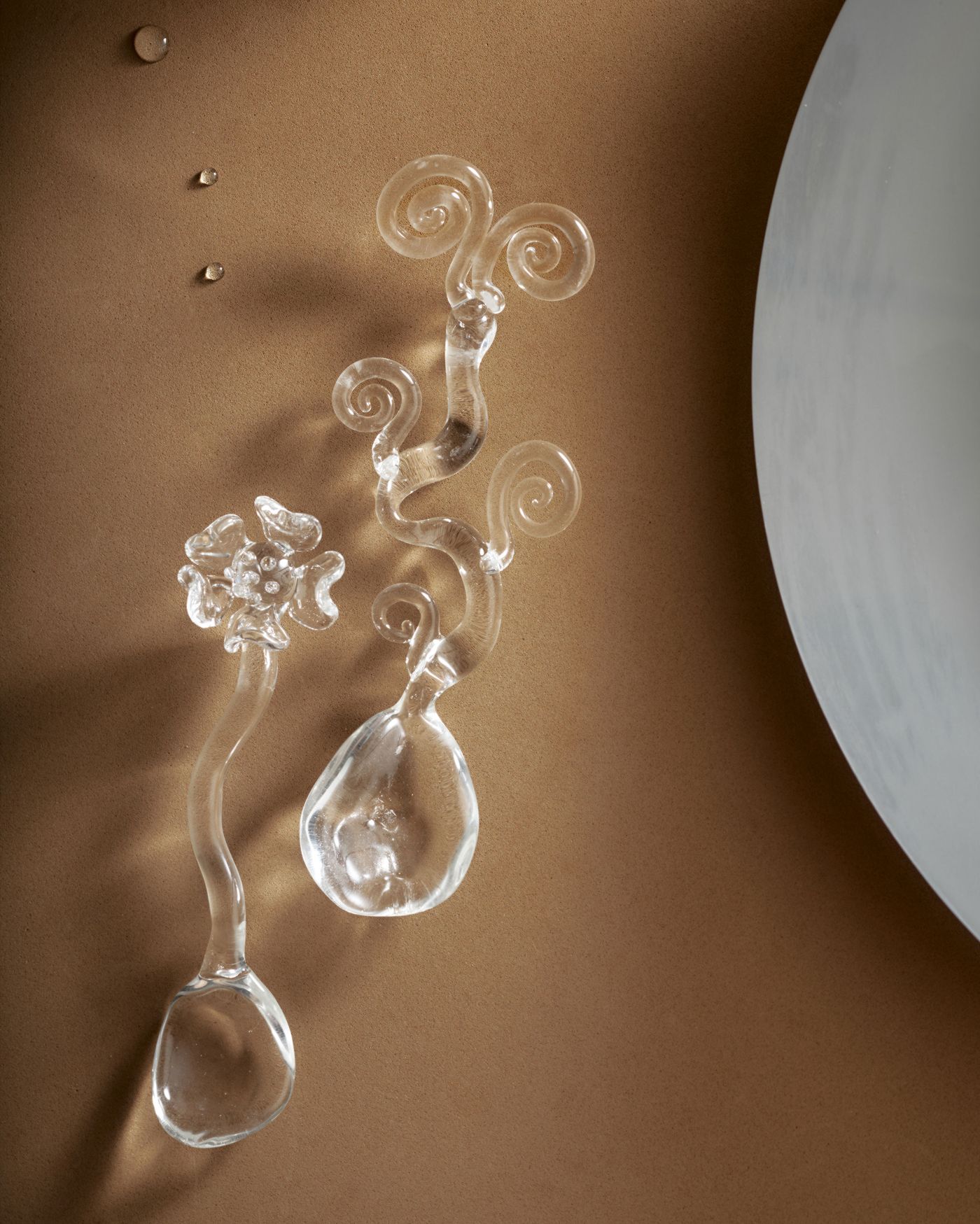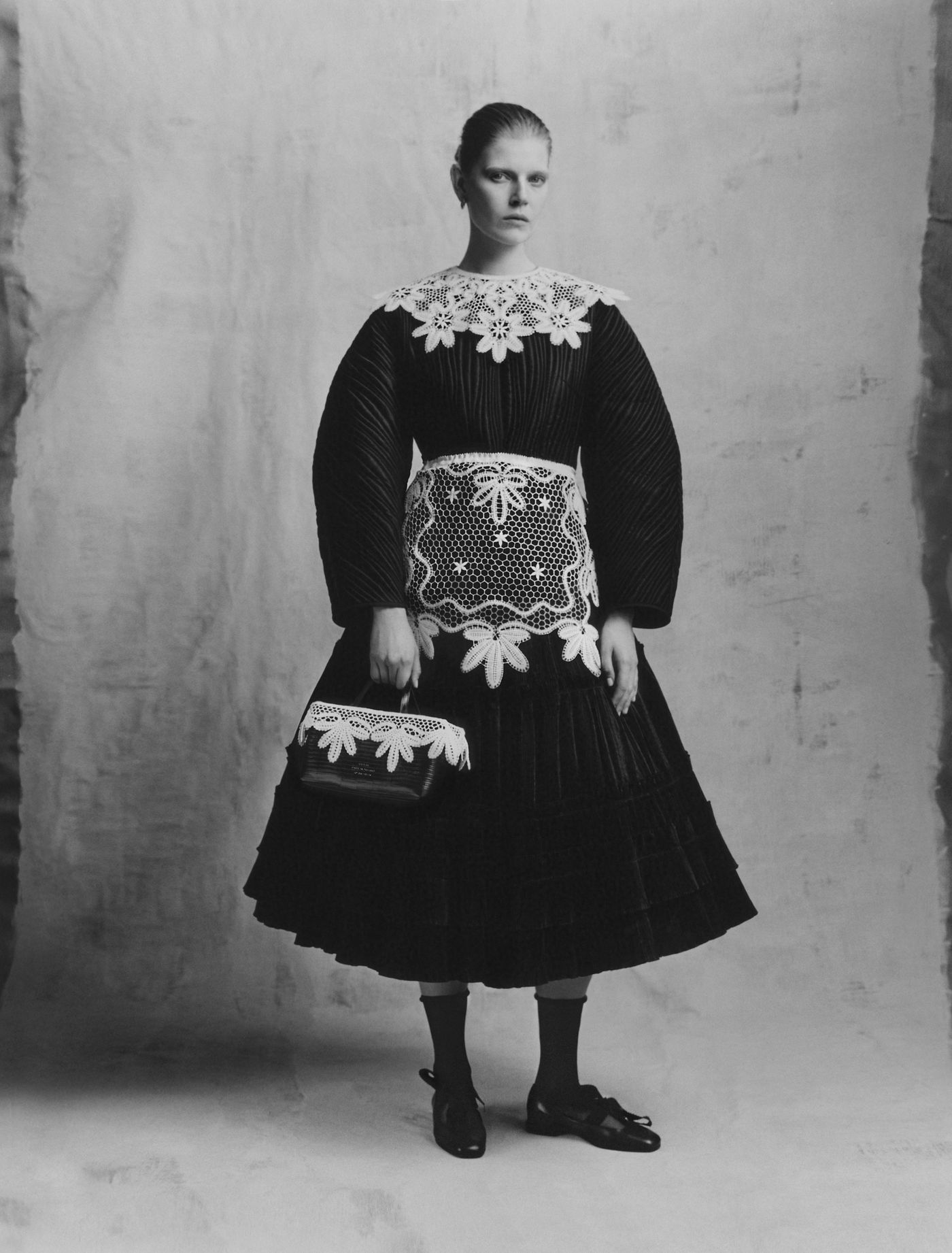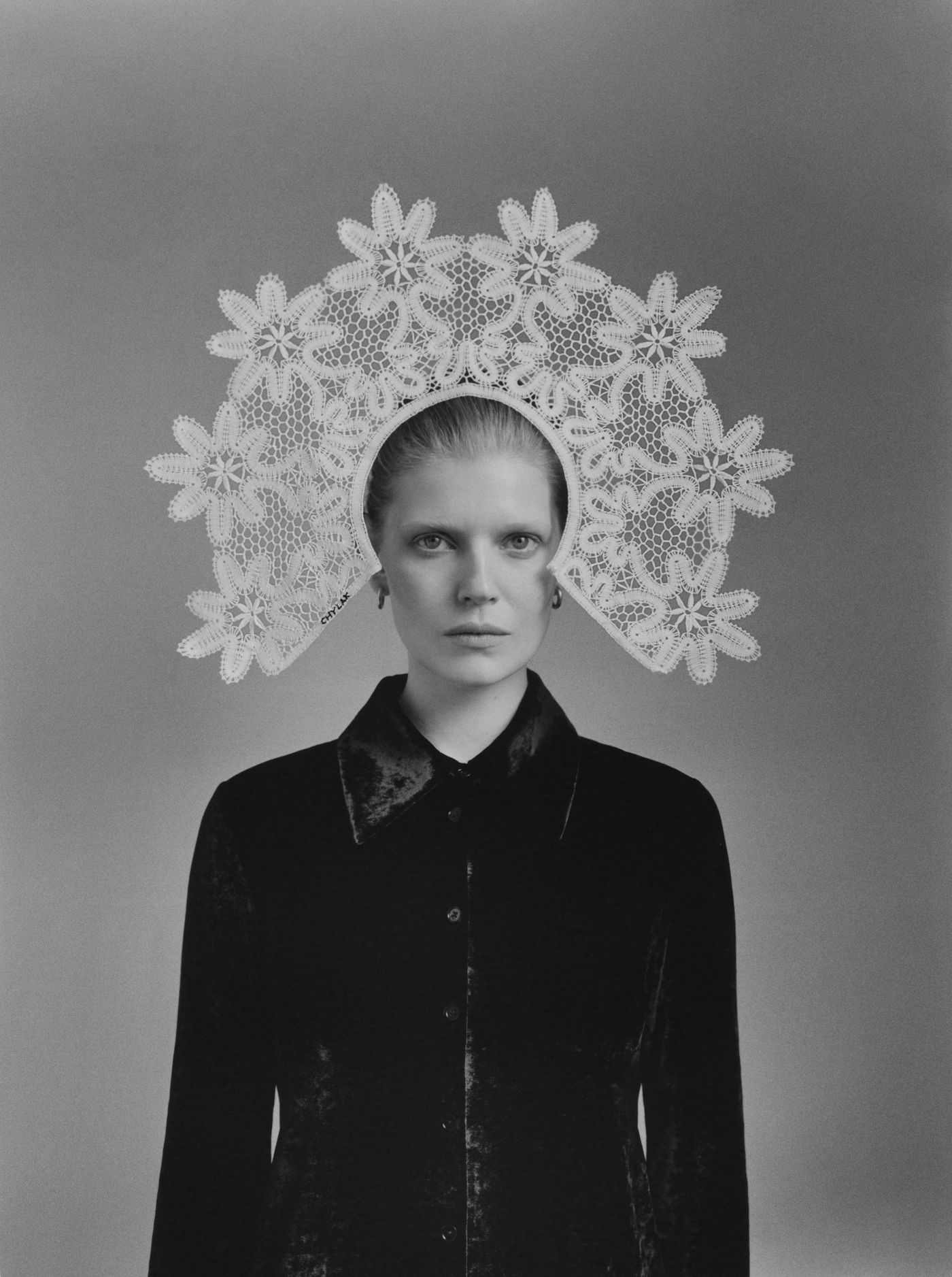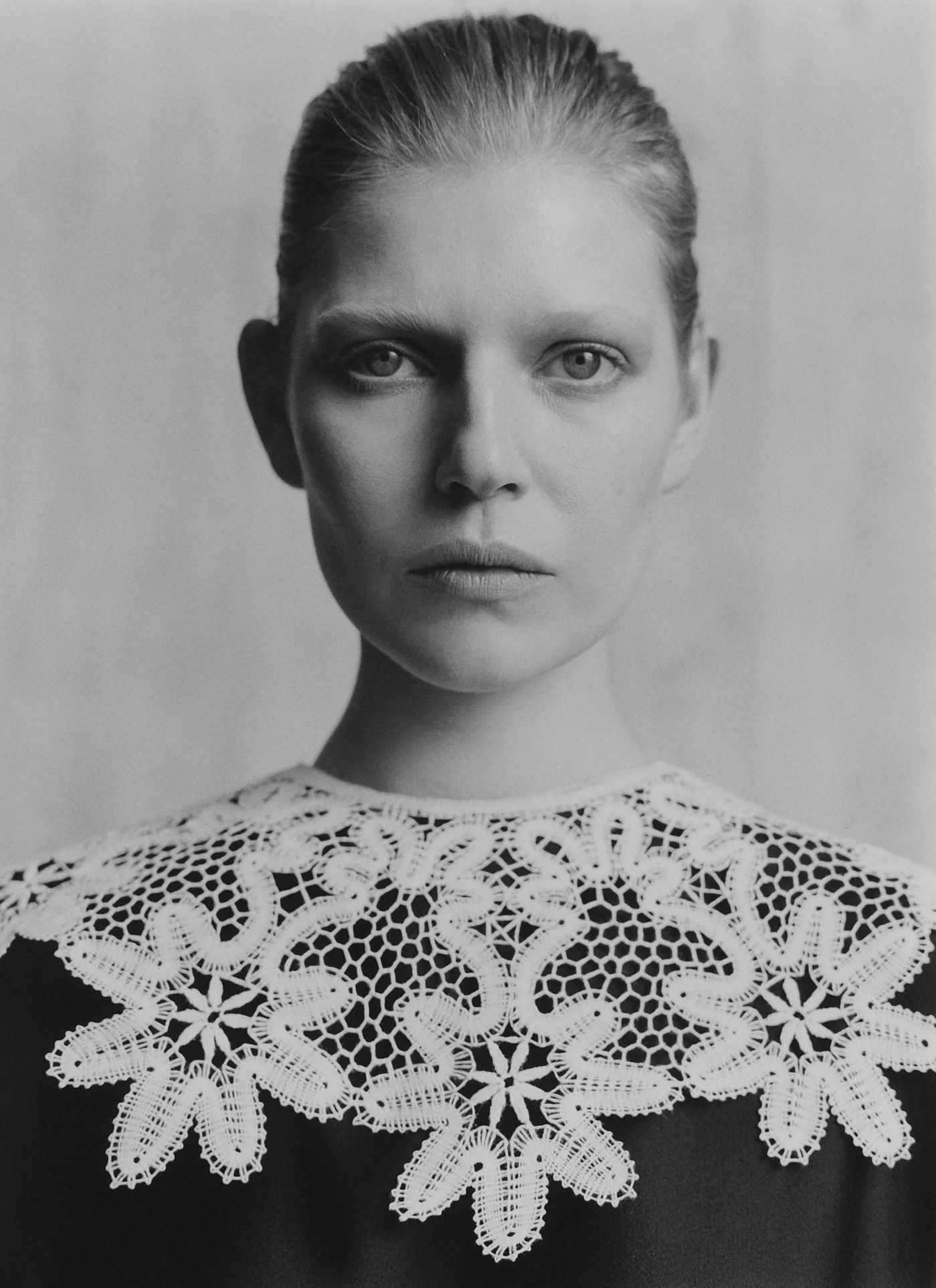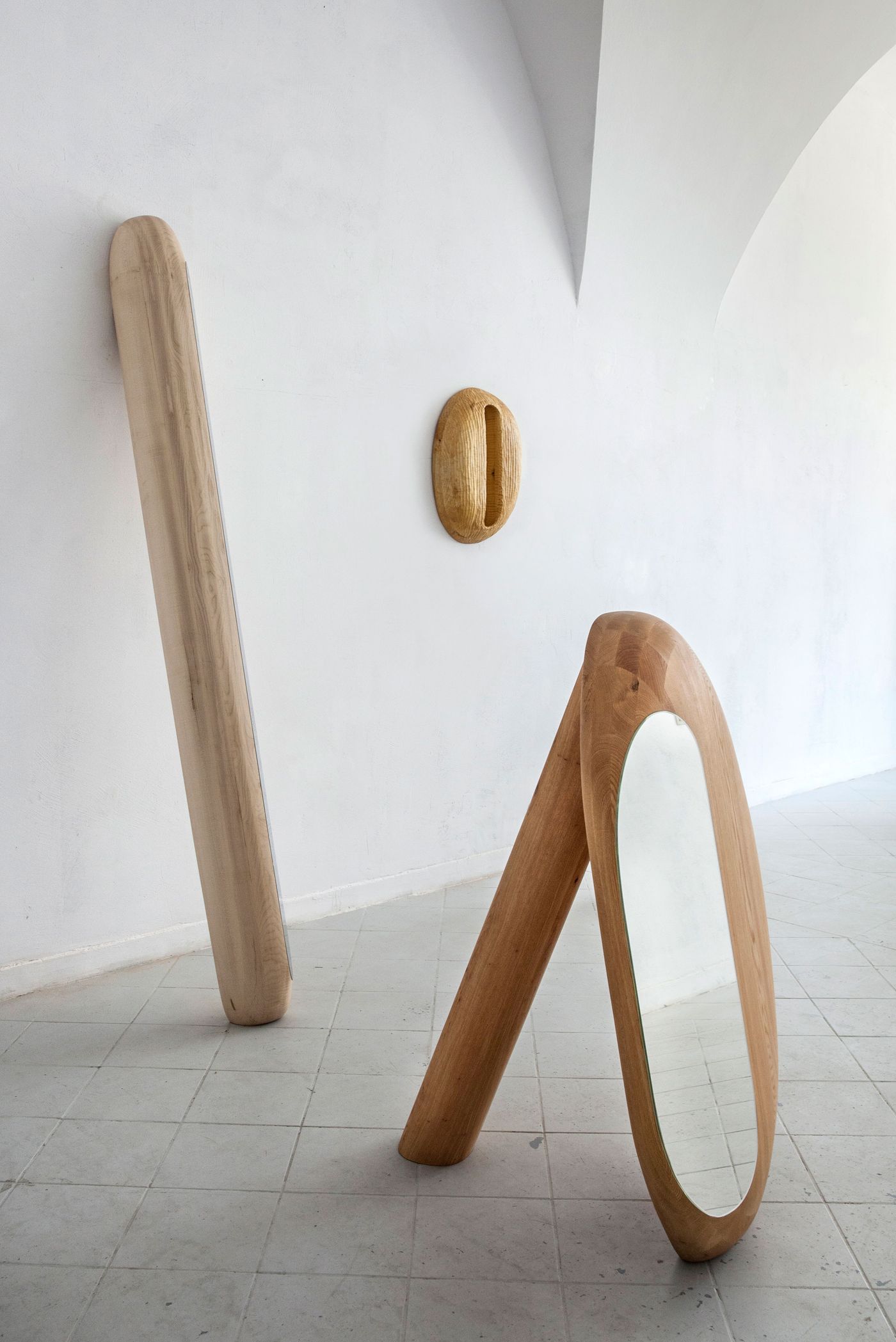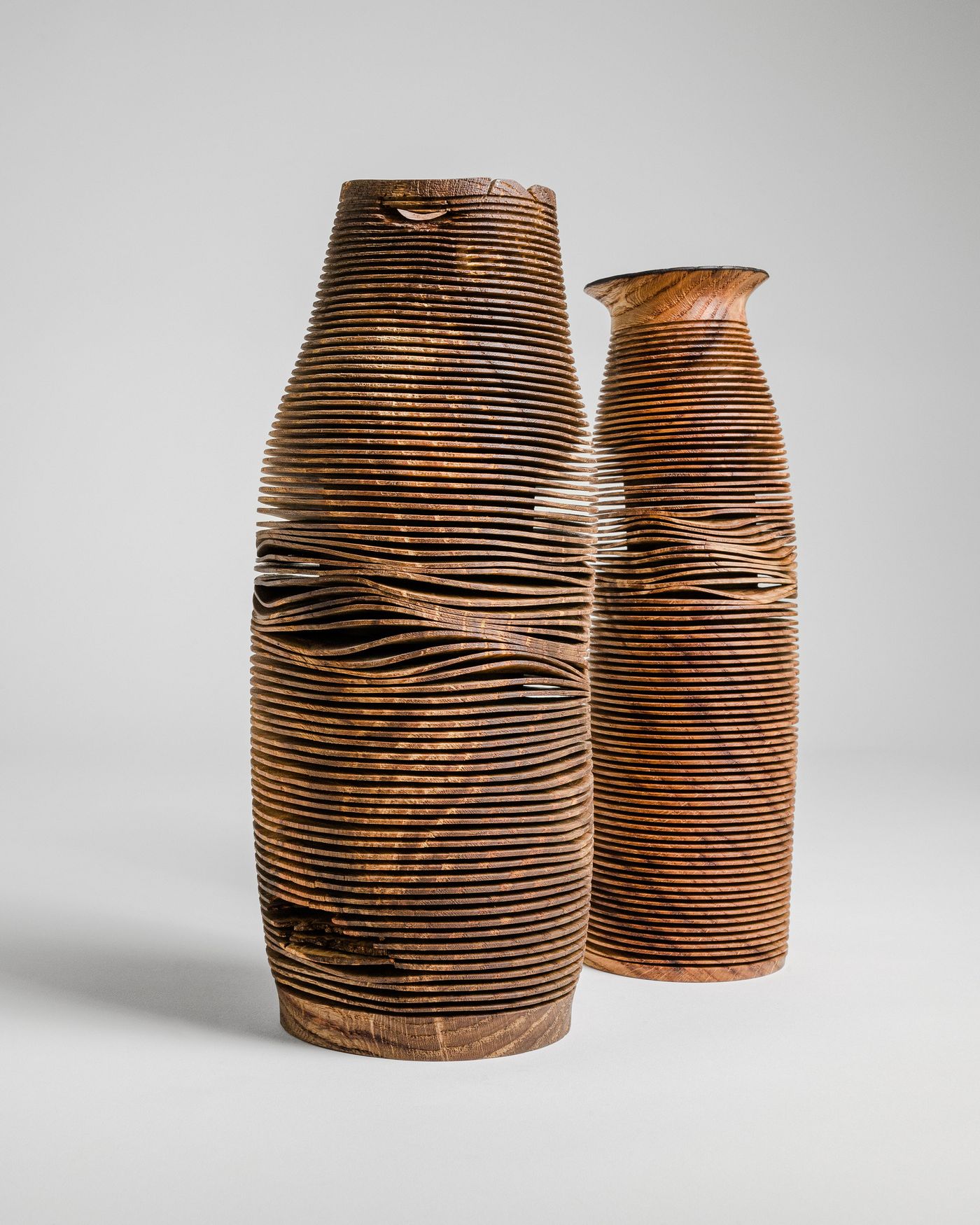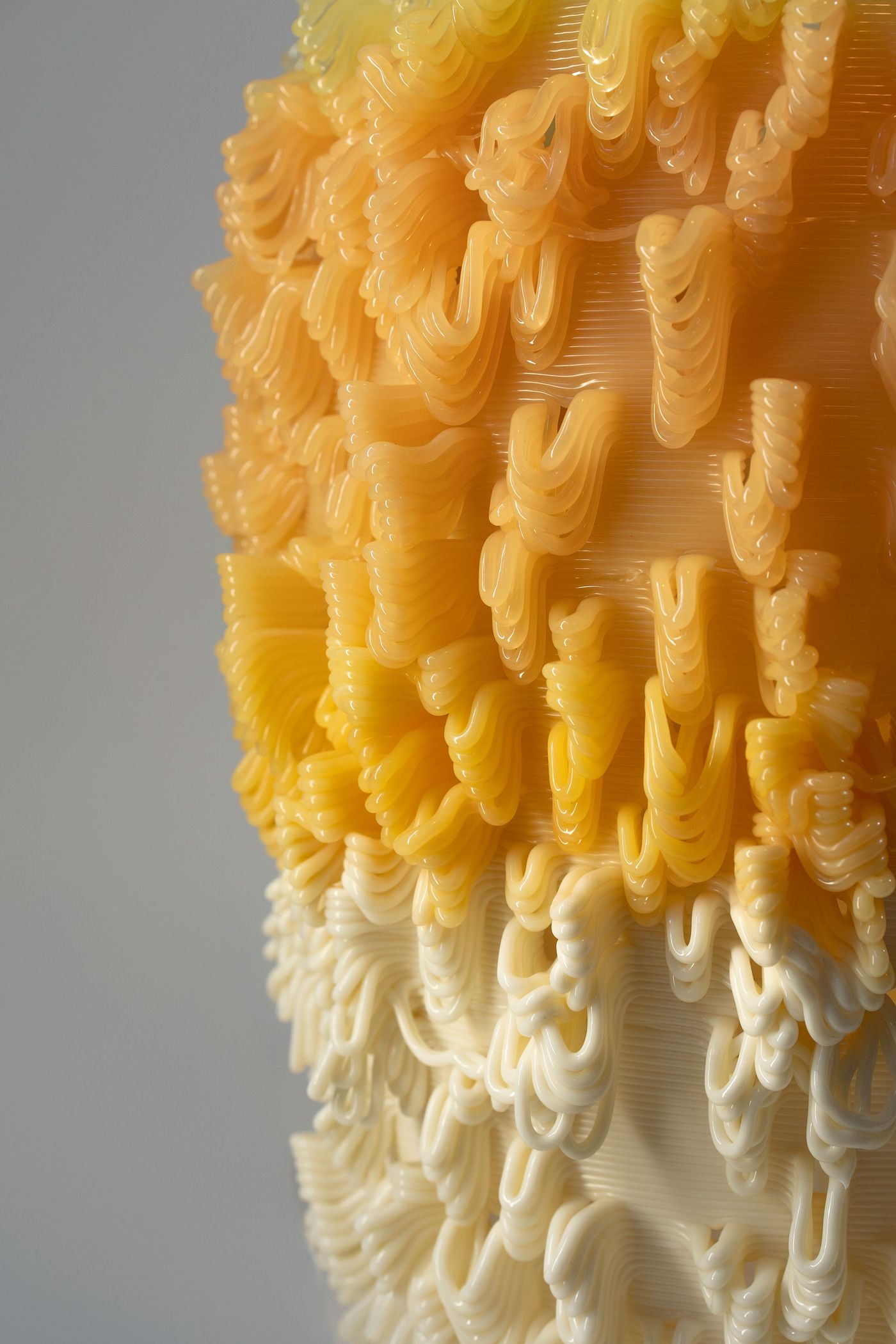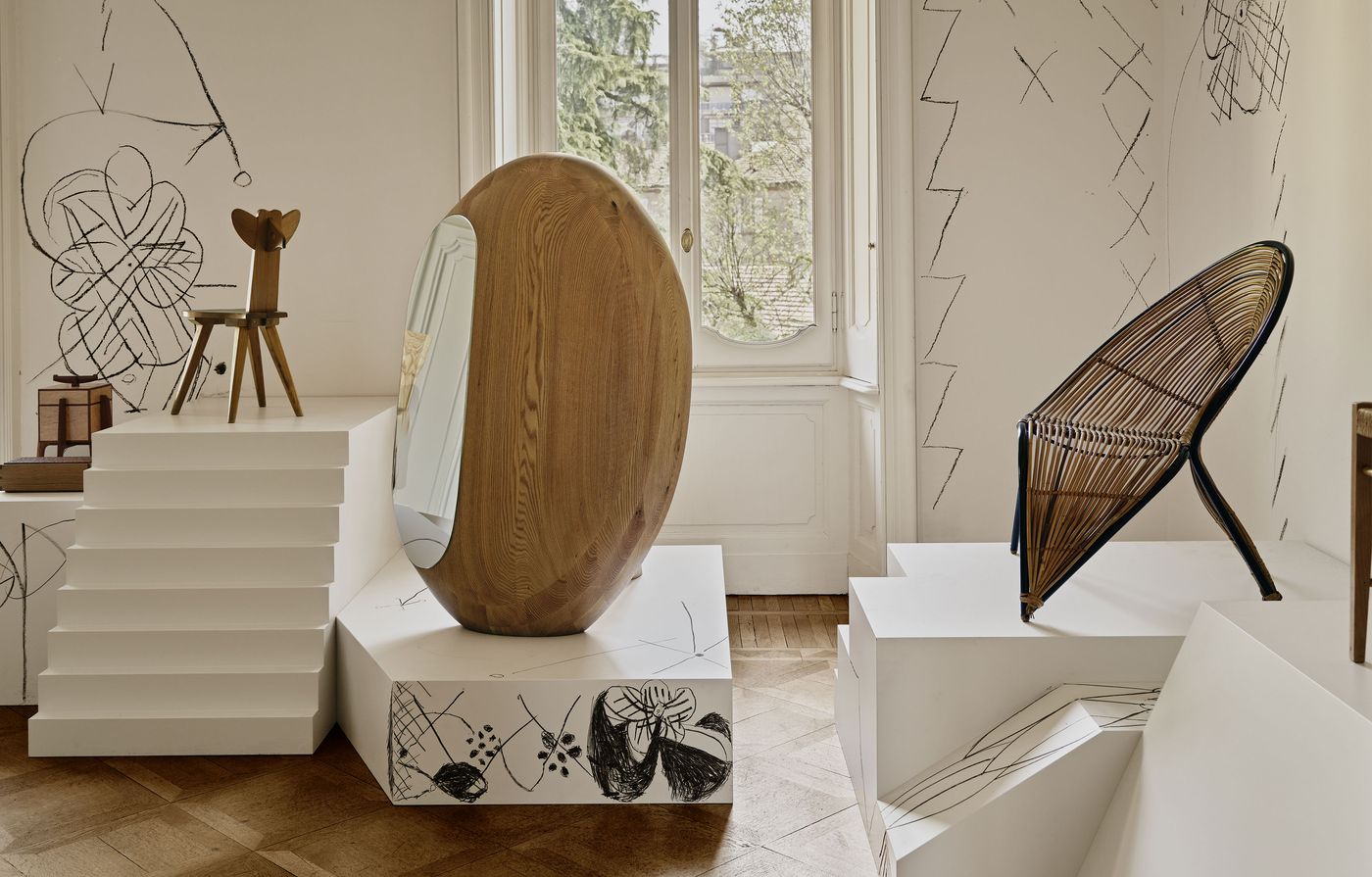
Romantic Brutalism: Visteria Foundation Showcases Polish Craft & Design at Milan Design Week 2025
Words by Yatzer
Location
Milan, Italy
Romantic Brutalism: Visteria Foundation Showcases Polish Craft & Design at Milan Design Week 2025
Words by Yatzer
Milan, Italy
Milan, Italy
Location
One of the reasons we love Milan Design Week is that it gives us the opportunity to discover exciting designers through immersive installations that spotlight emerging, under-the-radar design scenes from all over the world. This year, one such showcase was Romantic Brutalism: A Journey into Polish Craft and Design (April 7 – 13, 2025) at Viale di Porta Vercellina 11. Organized by the newly established Polish Visteria Foundation, founded by publisher and art patron Katarzyna Jordan, and curated by Federica Sala, it marked the centennial of Poland's artistic debut at the 1925 Exposition Internationale des Arts Décoratifs et Industriels Modernes in Paris.
Unfolding across ten rooms, an outdoor terrace, and two corridors transformed into a theatrical experience by Zuza Paradowska of Paradowski Studio, the exhibition introduced 23 Polish artists and designers whose works are rooted in the country’s artisanal heritage. This is a connection which we had the opportunity to explore back in January, invited as we were by the Visteria Foundation to Warsaw for an exclusive preview of the participating artists along with an immersive tour of the city's vibrant design scene; an experience that provided invaluable insight into the creative processes and cultural narratives shaping the exhibition in Milan.
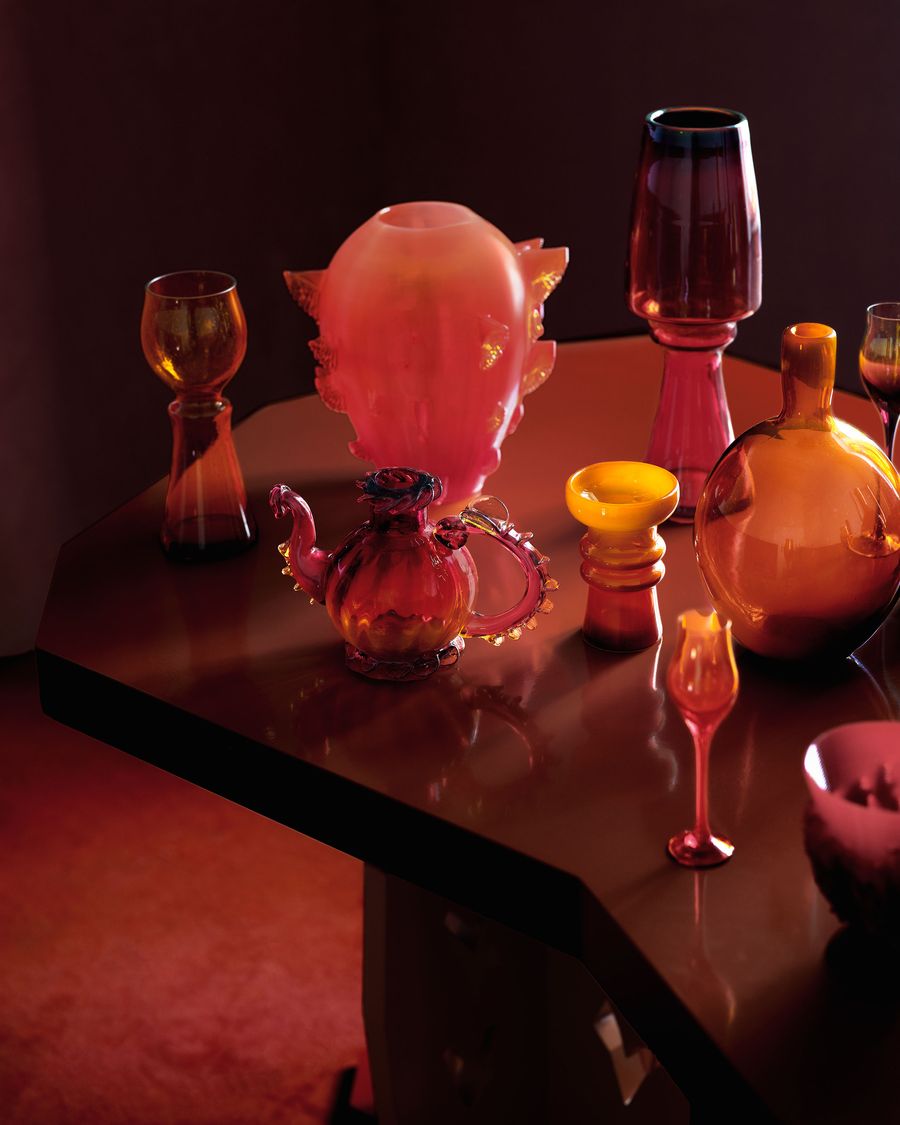
Exhibition view, "Romantic Brutalism" by Visteria Foundation during Milan Design Week 2025. Photography by Ludovic Balay. Featured: Wild at Heart collection by UAU Project.
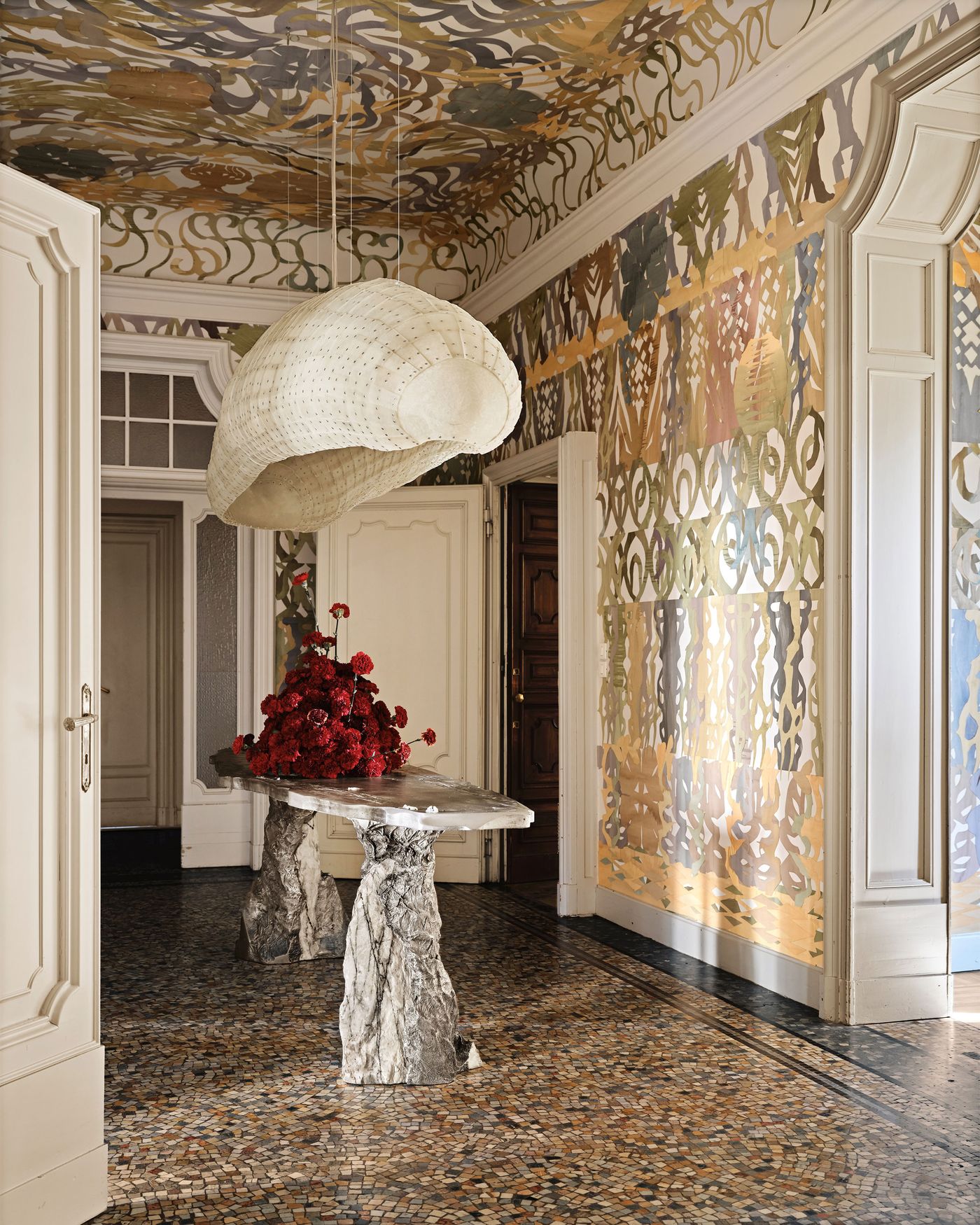
Exhibition view, "Romantic Brutalism" by Visteria Foundation during Milan Design Week 2025. Photography by Ludovic Balay. Featured: Table by Formsophy; Pendant light by Marek Bimer; Graphic mural by Mikolaj Moskal and Kaja Gliwa.

Curator Federica Sala (left) and Visteria Foundation founder Katarzyna Jordan.
Poland's design evolution is a testament to resilience and innovation. Going back in history, The Young Poland (Młoda Polska) movement, active between 1890 and 1918, sought to reassert national identity through art, craft, and design, drawing inspiration from nature and folk traditions while adopting a distinct modernist language related to English Arts & Crafts, Art Nouveau, and Viennese Secession. This cultural renaissance set the stage for Poland attending the 1925 Paris Exposition, where the Polish pavilion, designed by Józef Czajkowski, earned international acclaim. Now, a century later, Romantic Brutalism explores how themes such as nature, eternity and transformation, and styles like brutalism, romanticism, folk art, and Art Deco are being reinterpreted by a new generation of Polish artists and designers.
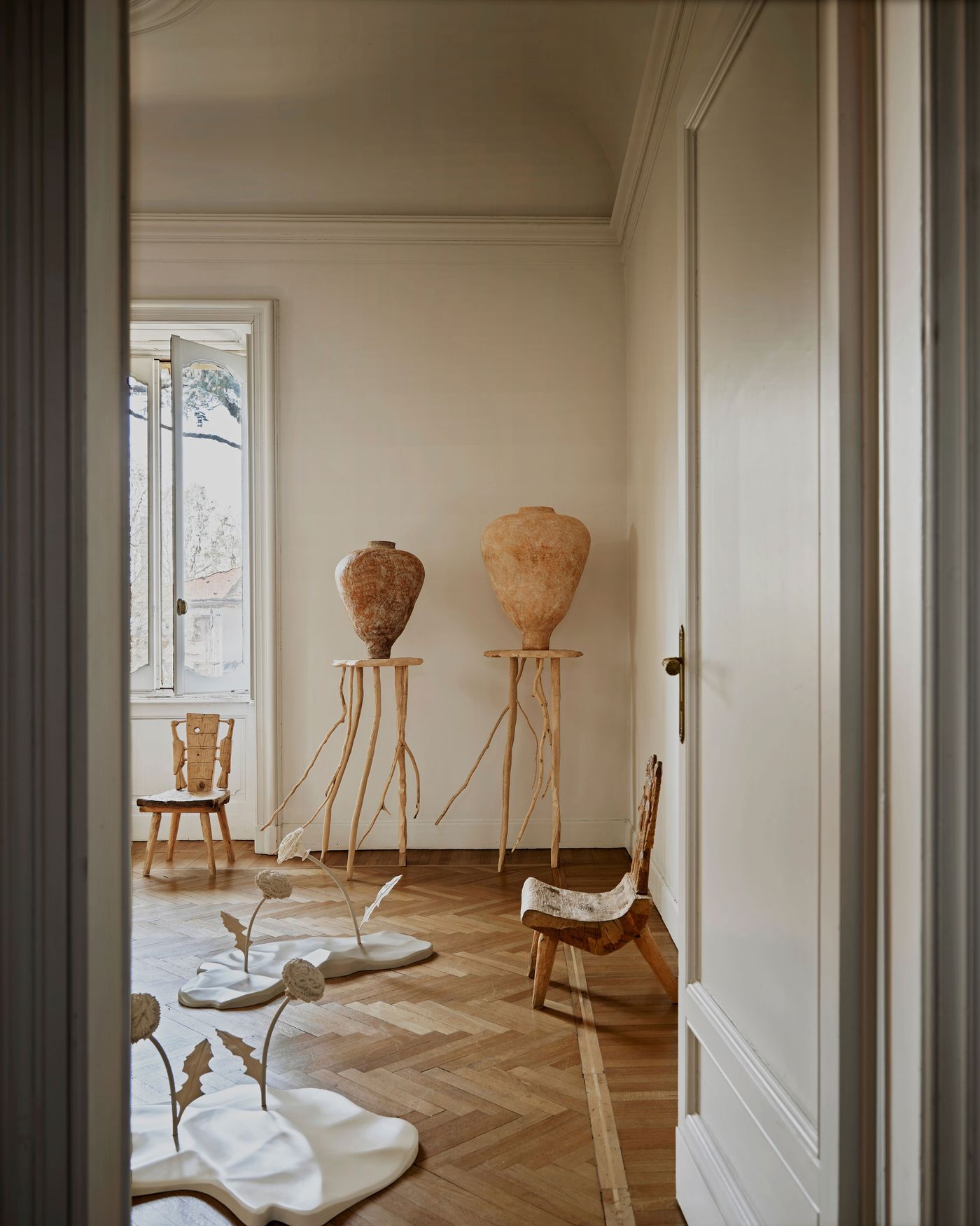
Exhibition view, "Romantic Brutalism" by Visteria Foundation during Milan Design Week 2025. Photography by Ludovic Balay. Featured: Ceramic vases by GRÔPK (Marcin Kuberna); Roots stools by Zuza Paradowska.
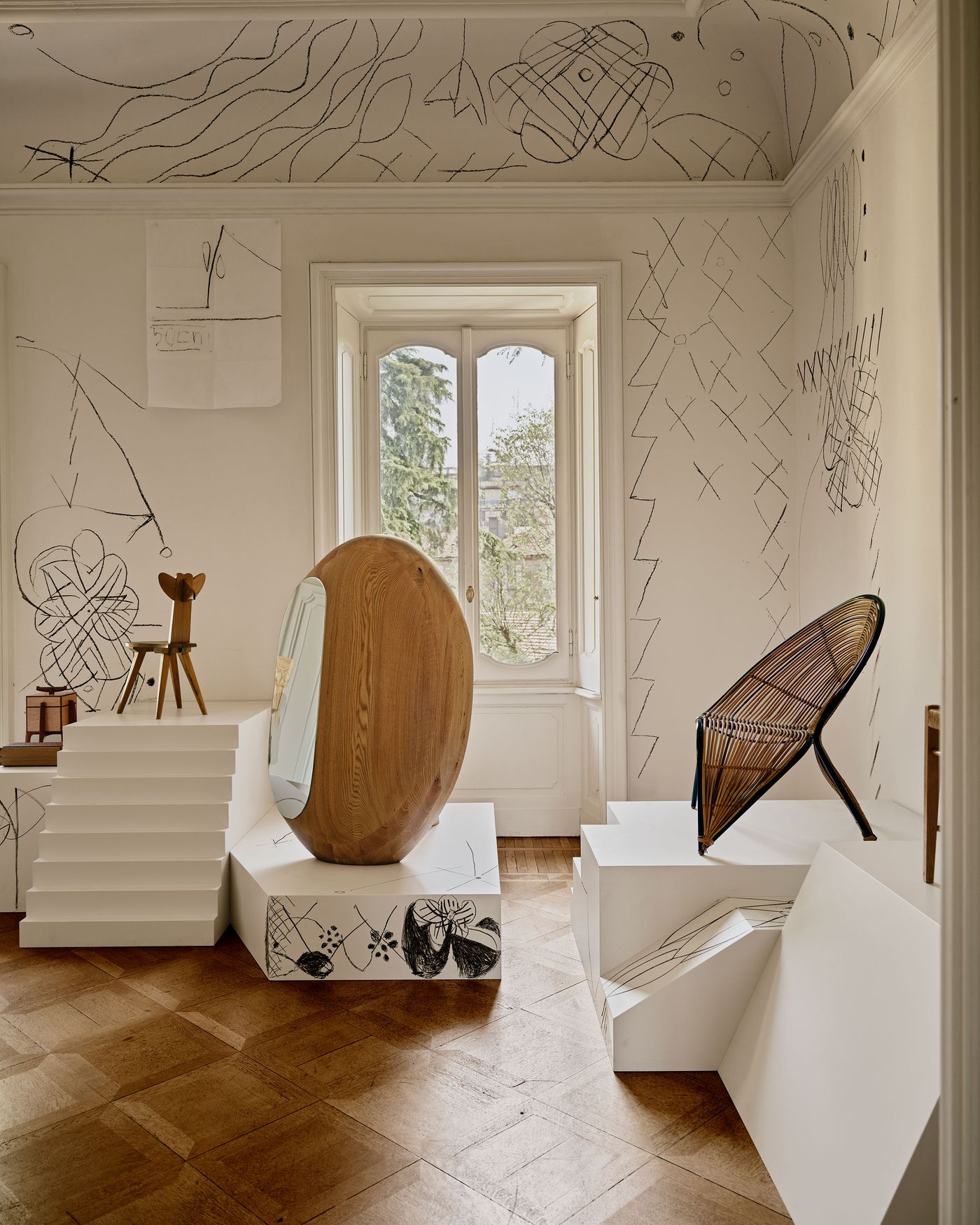
Exhibition view, "Romantic Brutalism" by Visteria Foundation during Milan Design Week 2025. Photography by Ludovic Balay. Featured (from left): Box by Jakub Przyborowski; "Roe deer" chair (circa 1942) by Olgierd Szlekys and Wladysława Wincze; Mirror N.16 by Anna Bera; Wicker chair by Władysław Wołkowski (circa 1960s). Ceiling mural by Marta Wojtuszek.
Standout pieces worth mentioning have been created by designers fusing traditional crafts with experimental techniques such as Marcin Rusak whose Warsaw-based studio operates as a laboratory where botany meets craftsmanship, and scientific inquiry fuels artistic expression. His signature practice of embedding floral waste into resin makes for striking one-of-a-kind sculptures and furniture that blur the boundaries between art, design, and material research, as is the case with the Flora Cabinet 190 Clear Amber on display. Also on view, a light sculpture from his Protoplasting Nature series, made from hand-welded steel wire and specially processed exotic leaves.
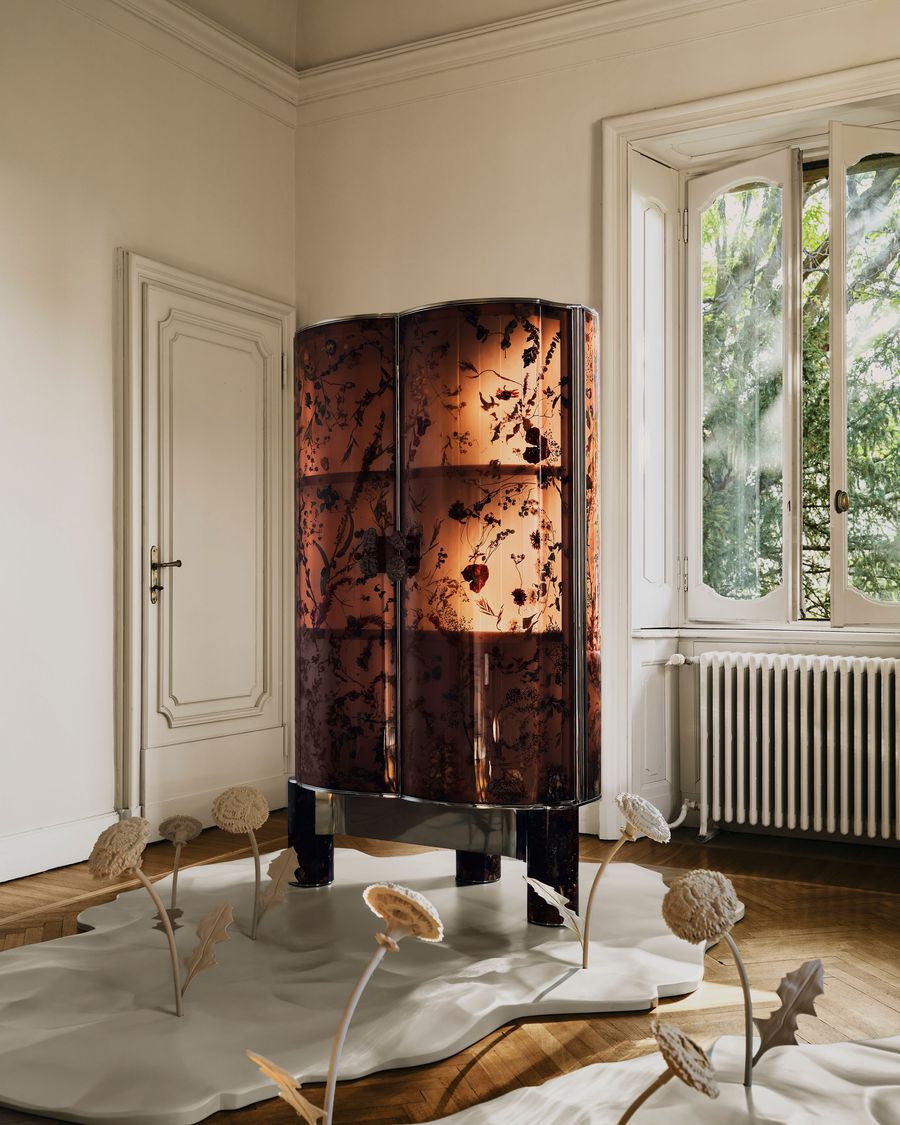
Exhibition view, "Romantic Brutalism" by Visteria Foundation during Milan Design Week 2025. Photography by Ludovic Balay. Featured: Flora Cabinet 190 Clear Amber by Marcin Rusak.

Exhibition view, "Romantic Brutalism" by Visteria Foundation during Milan Design Week 2025. Photography by Ludovic Balay. Featured: Light installation by Dérive Studio; Aluminum Desk by Jan Ankiersztajn; Wall art by Kasia Kucharska.
Poznań-based designer Jan Ankiersztajn and design duo Alicja Prussakowska and Jakub Kijowski of Formsophy, similarly engages with materiality, using aluminium to create sculptural furniture that feels both primeval and futuristic. Characterized by undulating, organic shapes, Formsophy’s work captures the visual dynamism of liquid metal as if frozen in motion. Occasionally, they incorporate marble elements, introducing a rugged counterpoint to the sleekness of aluminium, creating an interplay of textures that enhances their pieces' sculptural depth and tactile intrigue. Ranging from seating and tables to jugs and bowls, Ankiersztajn’s works embrace a much more minimalist aesthetic that nevertheless belies a complex, experimental crafting process.
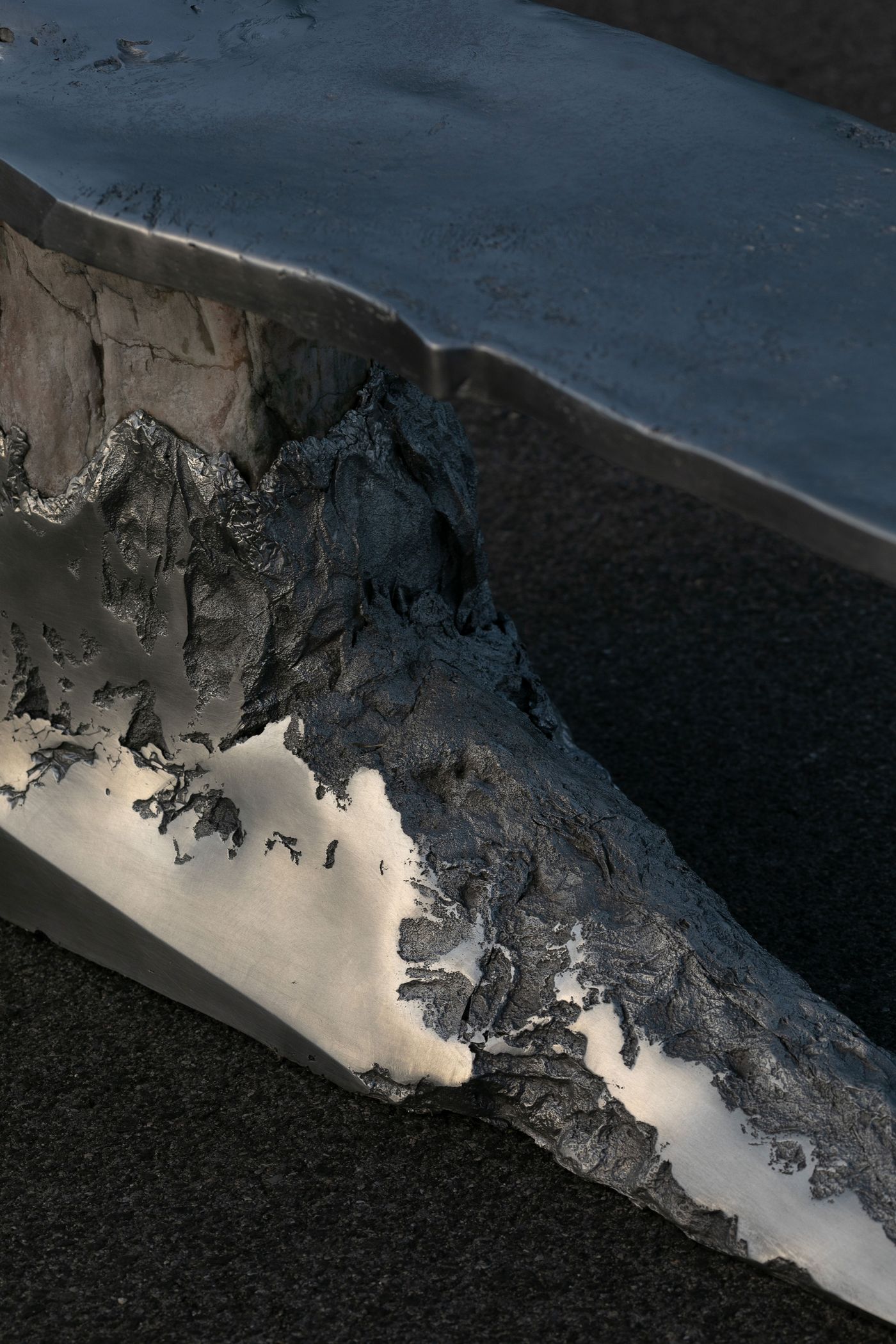
Formsophy, Tore (detail). Courtesy of Visteria Foundation.
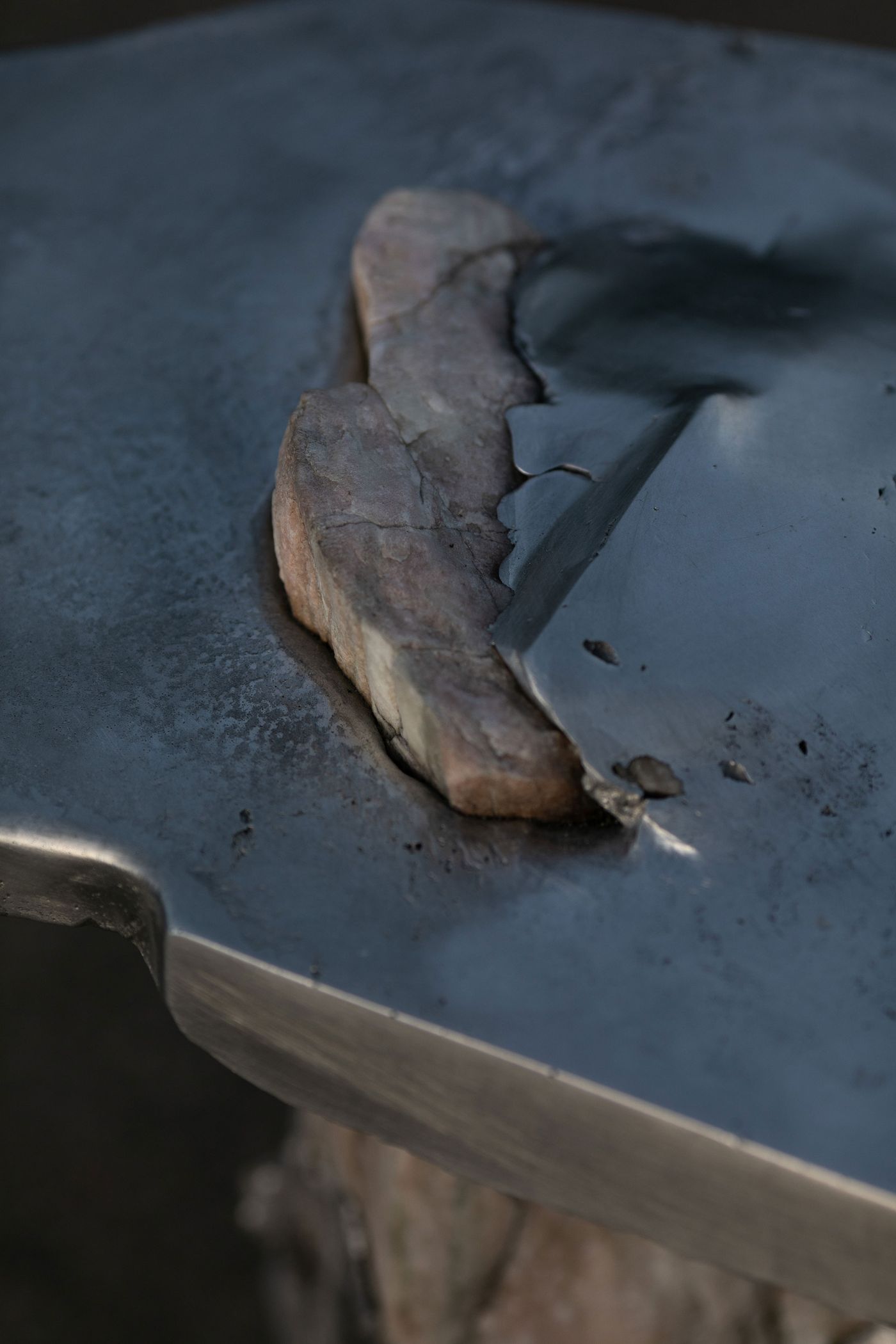
Formsophy, Tore (detail). Courtesy of Visteria Foundation.
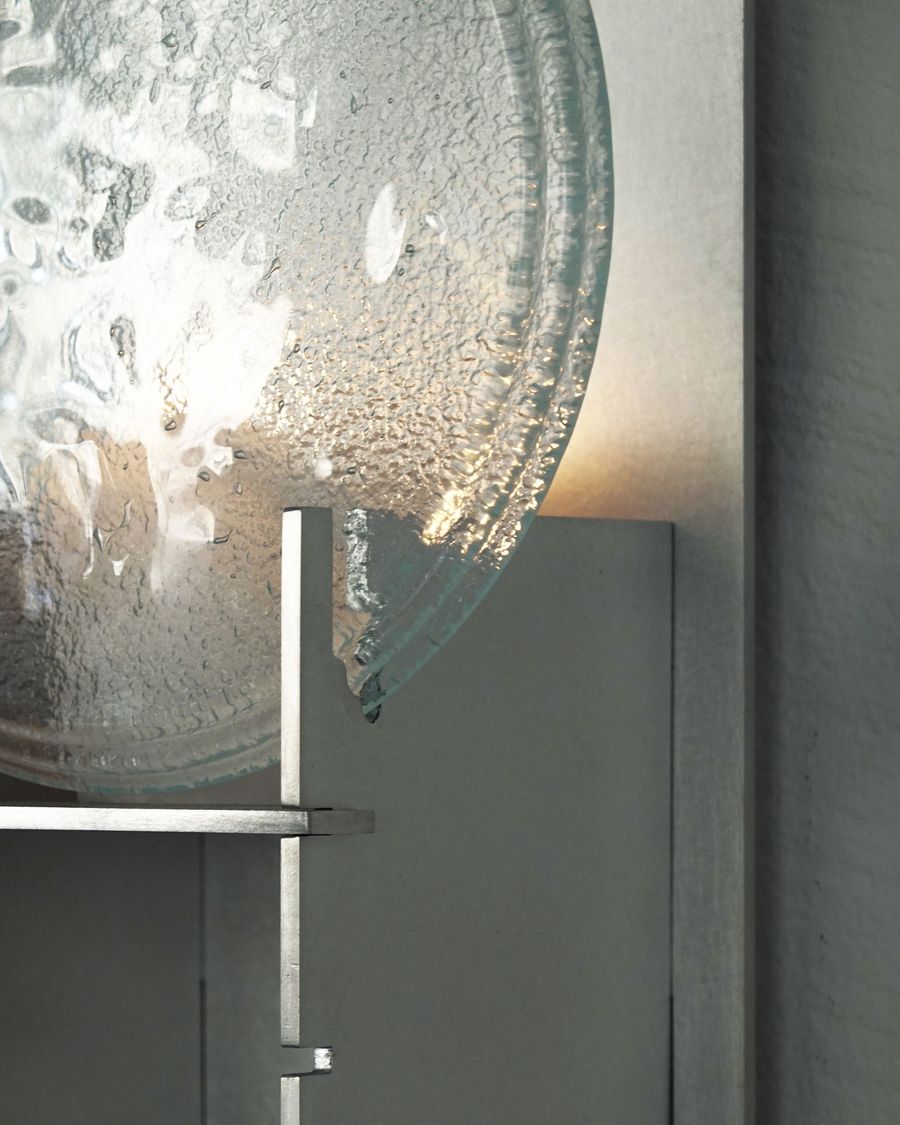
Hasik Design Studio, Sol Candlestick. Courtesy of Visteria Foundation.
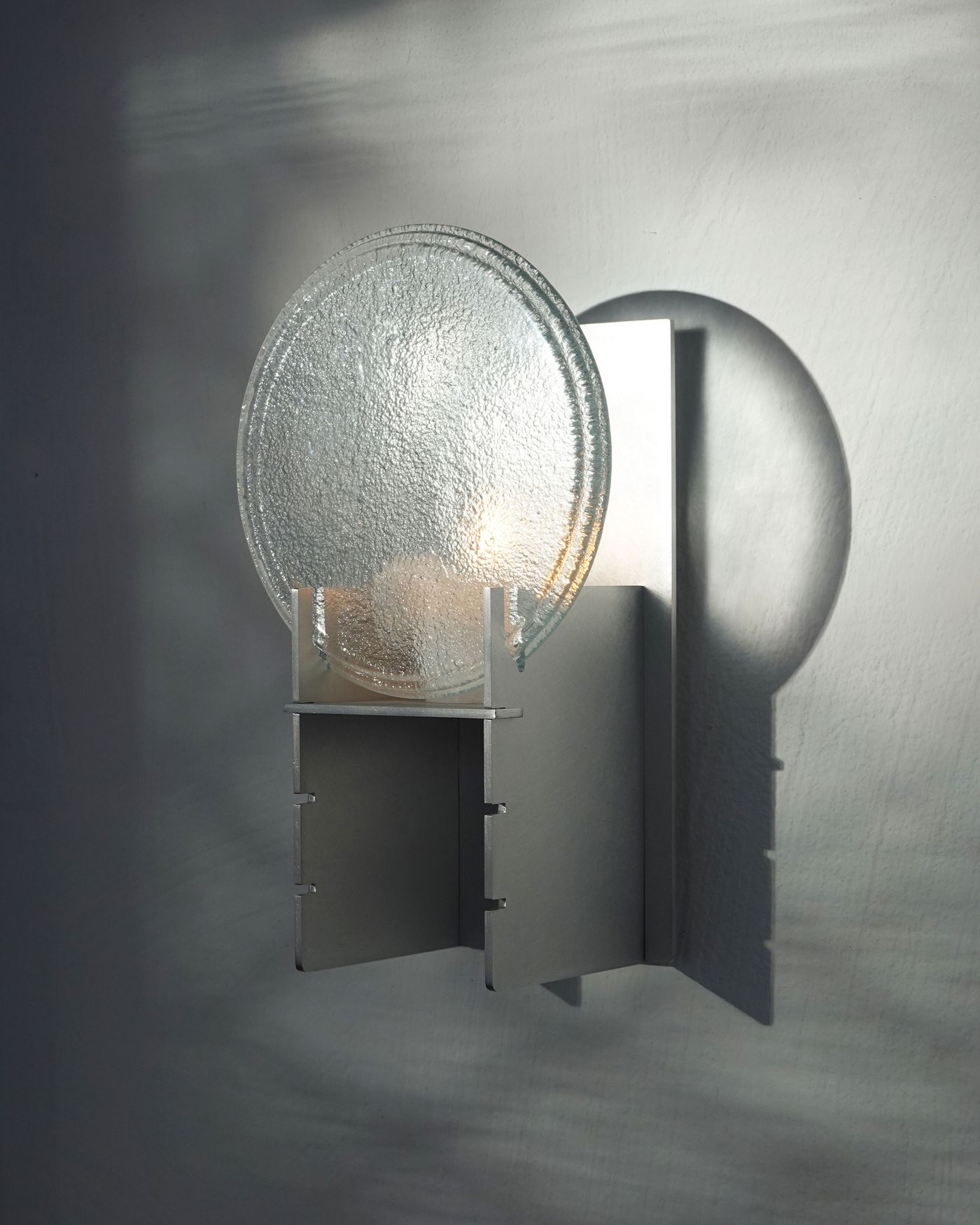
Hasik Design Studio, Sol Candlestick. Courtesy of Visteria Foundation.
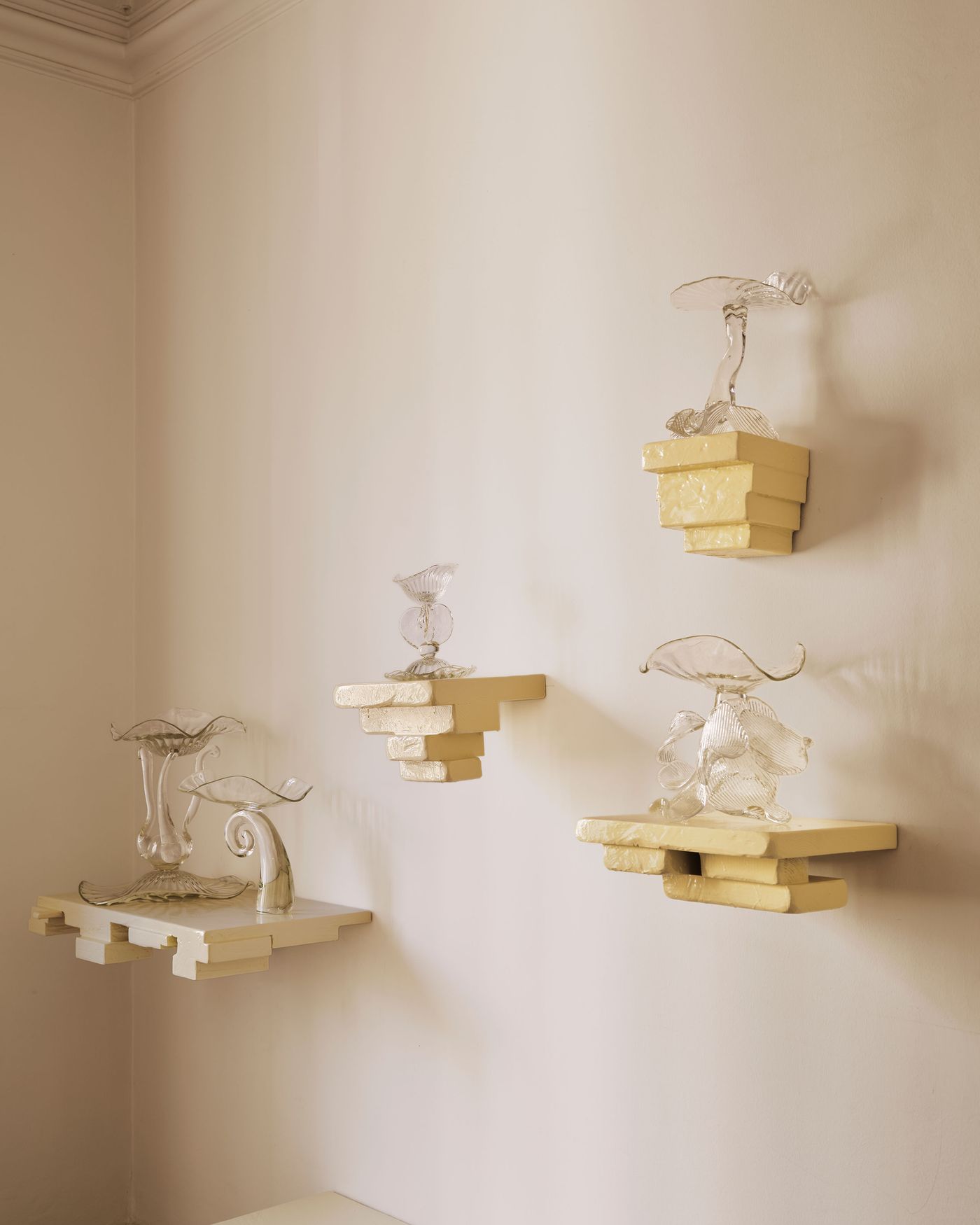
Exhibition view, "Romantic Brutalism" by Visteria Foundation during Milan Design Week 2025. Photography by Ludovic Balay. Featured: Glass sculpture by Filomena Smola.
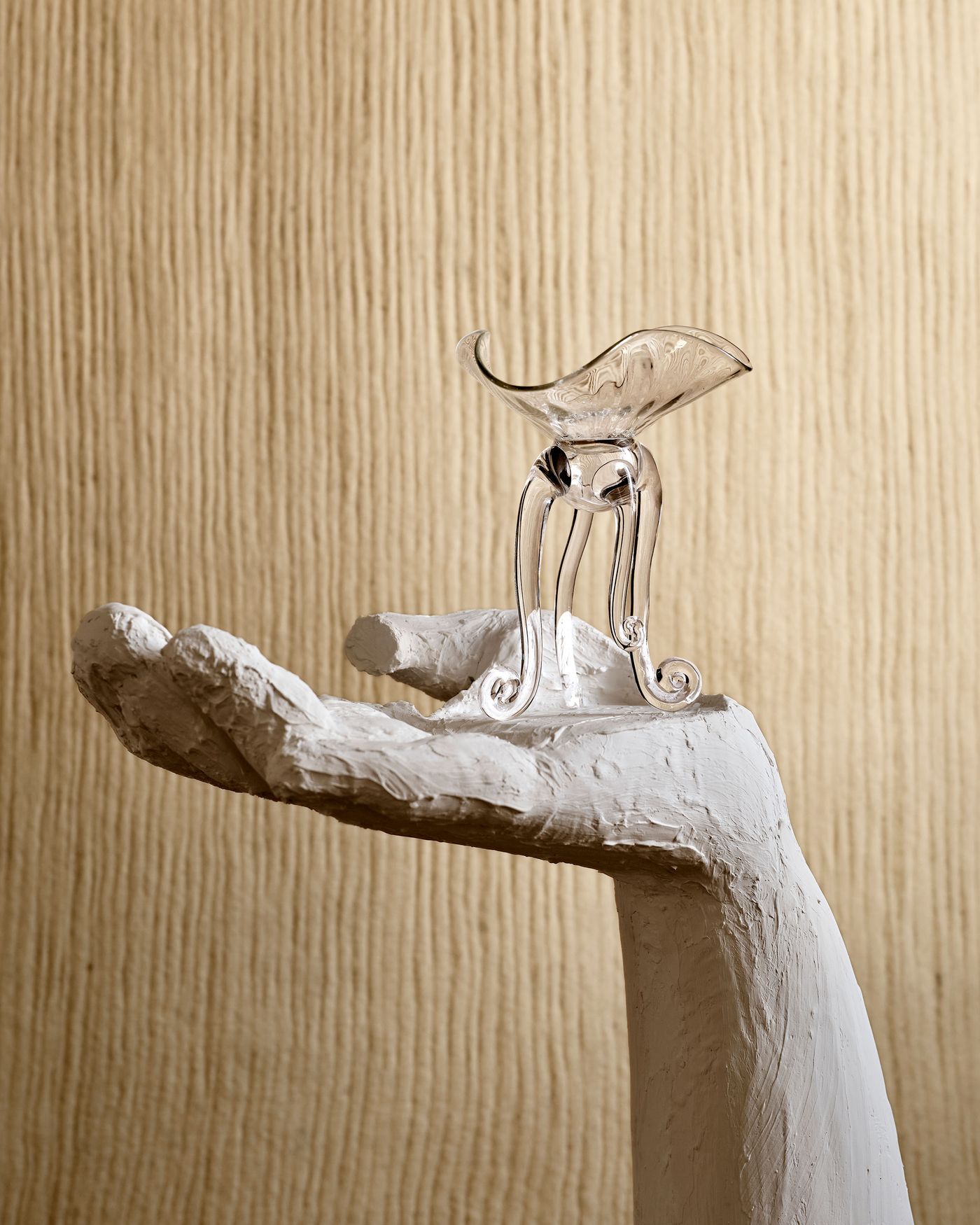
Exhibition view, "Romantic Brutalism" by Visteria Foundation during Milan Design Week 2025. Photography by Ludovic Balay. Featured: Glass sculpture by Filomena Smola.
In the realm of experimental glasswork, Aleksandra Zawistowska and Filomena Smoła bring a tactile, playful sensibility to their creations. Zawistowska, co-founder of Szkło Studio, reinterprets glassblowing traditions with bespoke molds made from stacked bricks and wood chunks, while Smoła infuses her hand-blown sculptures with a zany sensuality. Katarzyna Harasym contributes to this material dialogue with her Neocrystal series, reviving old crystal vessels through lampworking, fusing, and casting techniques that breathe new life into forgotten forms.
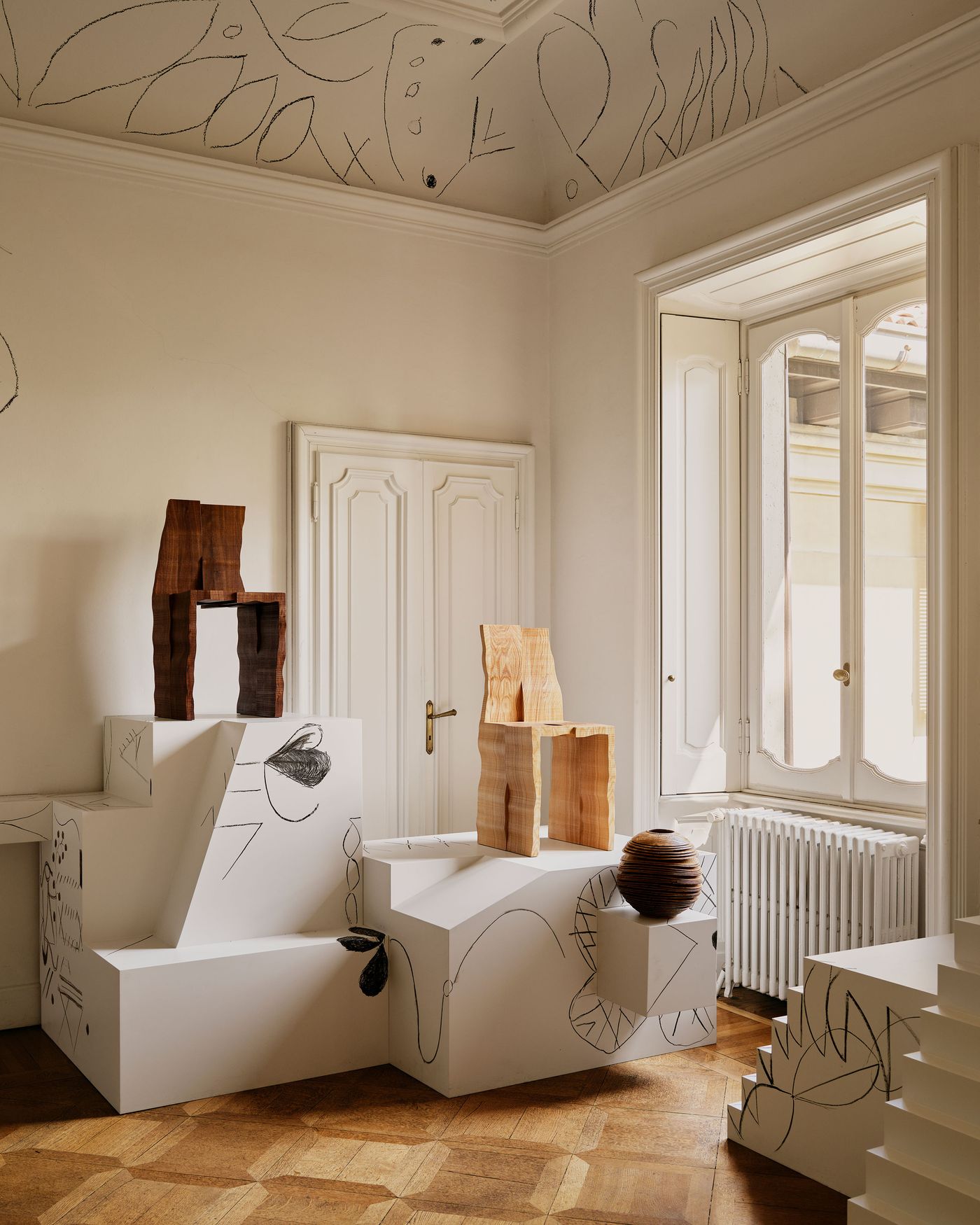
Exhibition view, "Romantic Brutalism" by Visteria Foundation during Milan Design Week 2025. Photography by Ludovic Balay. Featured: Wooden chairs by Aleksander Oniszh; Wooden vase by Maciej Gąsienica Giewont; Ceiling mural by Marta Wojtuszek.
Woodcraft finds fresh expression in the hands of Aleksander Oniszh, Maciej Gąsienica Giewont, and Anna Berra. Oniszh crafts furniture that balances modern forms with artisanal methods, his designs revealing a deep understanding of wood's physicality and structural properties. Giewont, operating from his one-man studio in Warsaw, embraces the natural imperfections of wood, turning knots and cracks into features that celebrate authenticity, aligning his work with the wabi-sabi philosophy. Berra, known for her poetic approach to woodworking, merges hand-carved elements with unexpected material juxtapositions, creating pieces that feel both familiar and enigmatic, imbued with a quiet narrative quality.
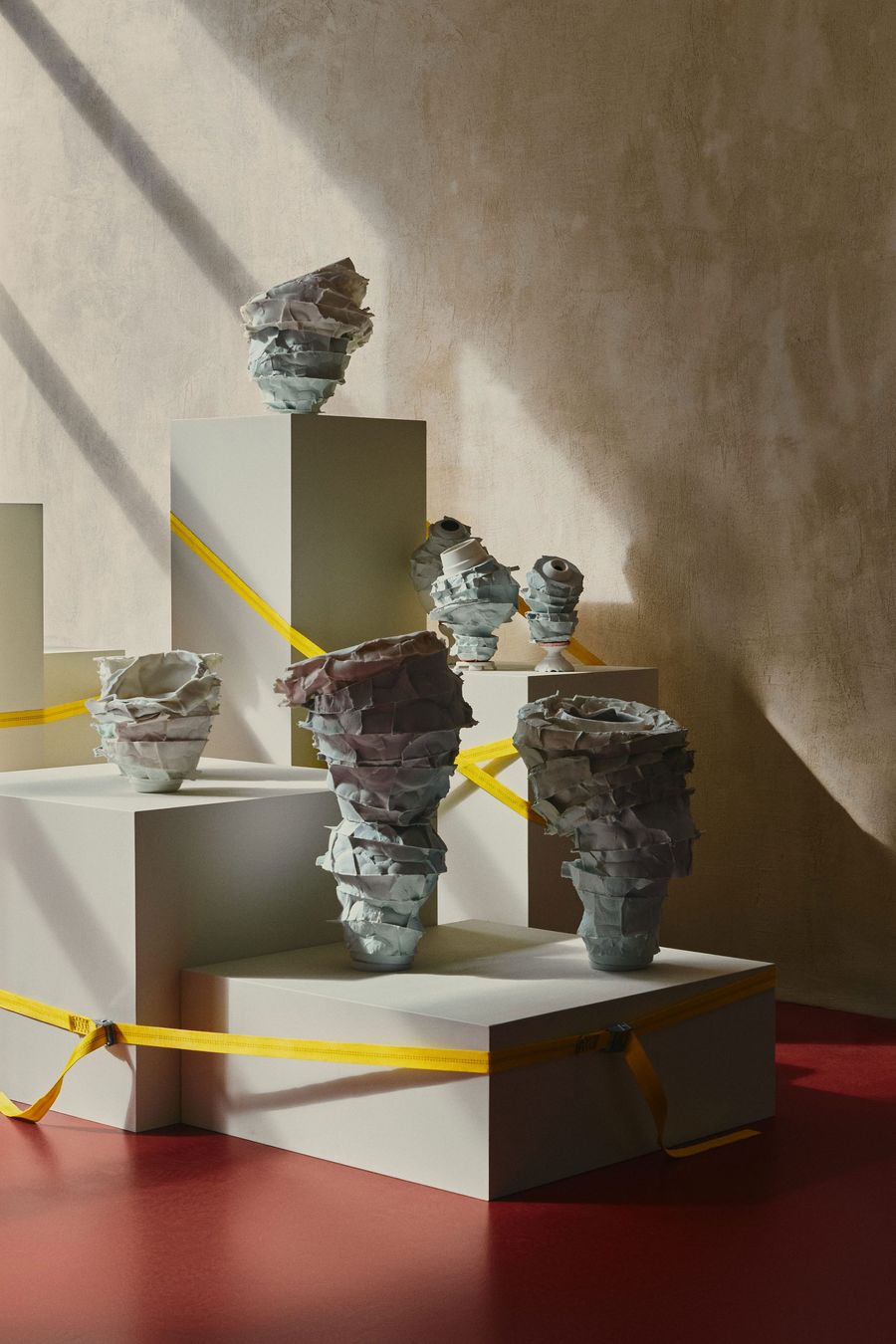
Monika Patuszyńska. Photography by Tomo Yarmush. Courtesy of Objekt Gallery.
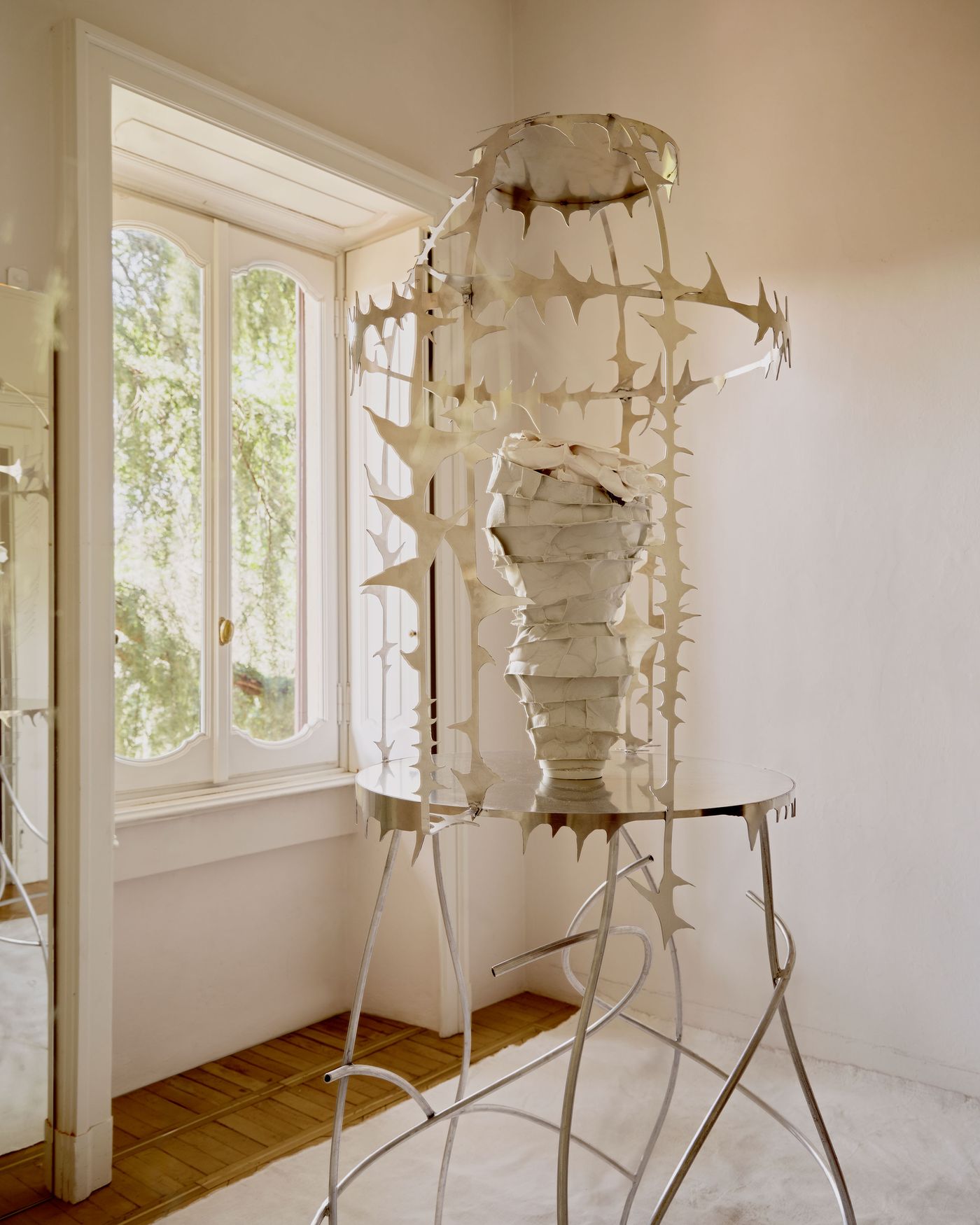
Exhibition view, "Romantic Brutalism" by Visteria Foundation during Milan Design Week 2025. Photography by Ludovic Balay. Featured: Sculpture by Monika Patuszyńska.
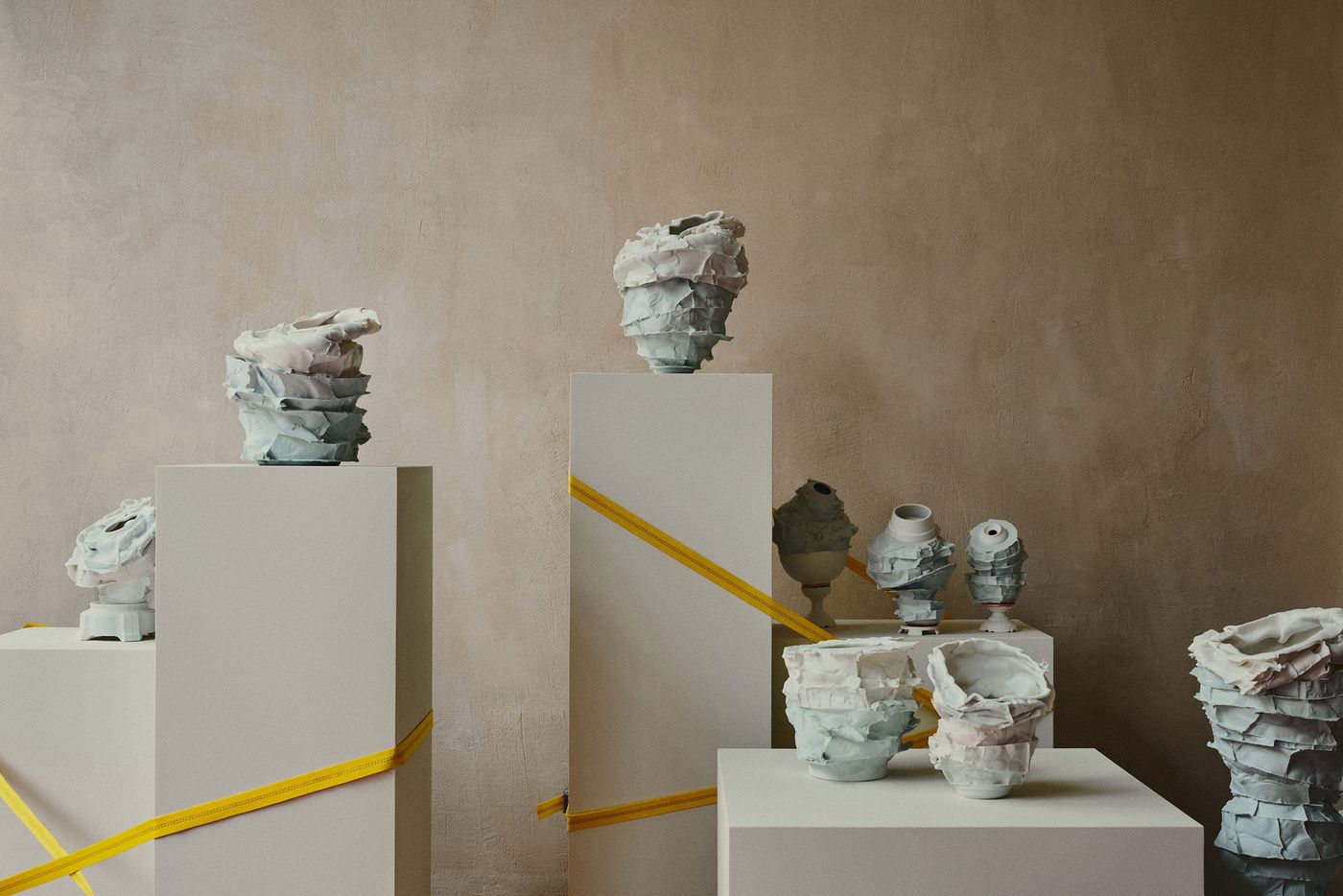
Monika Patuszyńska. Photography by Tomo Yarmush. Courtesy of Objekt Gallery.
Marek Bimer, meanwhile, extends the conversation into sculptural lighting, crafting abstract forms from epoxy resin, bronze, and alabaster, drawing inspiration from modernist masters like Hans Arp and Constantin Brancusi. Also working at the intersection of tradition and innovation, Justyna Fałdzińska and Miłosz Dąbrowski from the UAU Project redefine functional art through 3D printing, using plant-based bioplastics to create recyclable and compostable objects that push the boundaries of sustainable design. Their commitment to fusing high craftsmanship with cutting-edge technology speaks to the broader themes of the exhibition: a reverence for the past, a curiosity for the future, and an unrelenting pursuit of beauty in materiality.
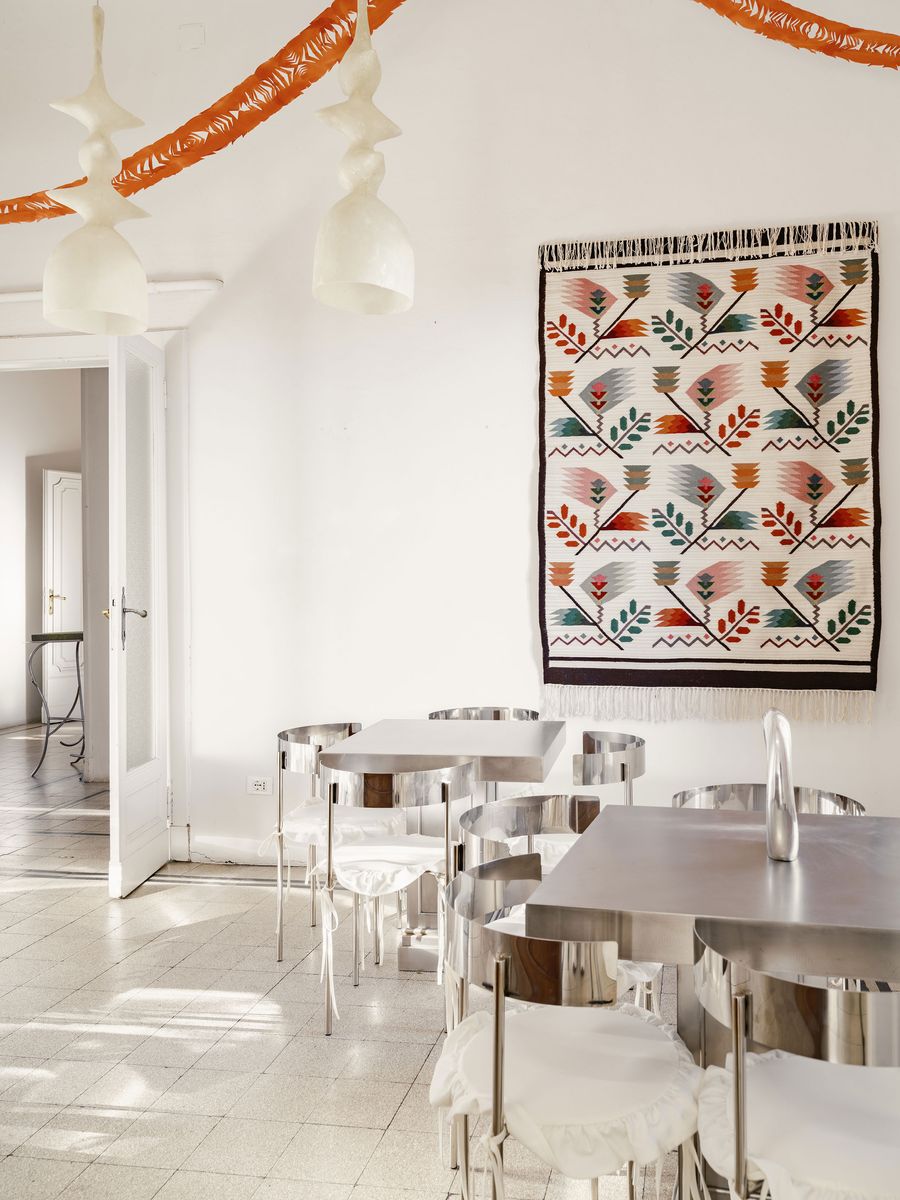
Kilim “Meadow” designed by Zofia Stryjeńska for Splot. Photo by Hania Linkowska and Karol Palka.
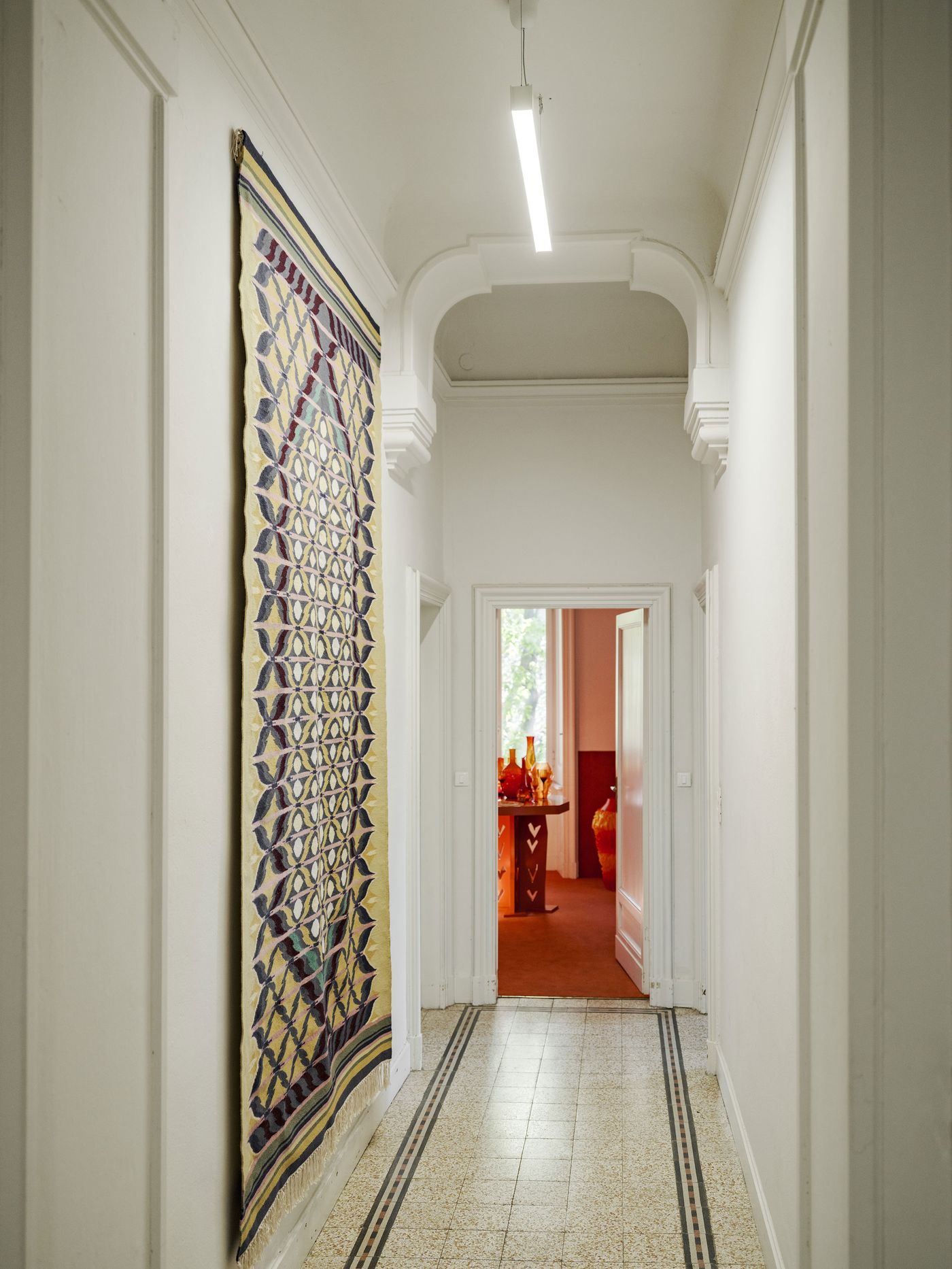
Kilim “Paris” designed by Józef Czajkowski for Splot. Photo by Hania Linkowska and Karol Palka.
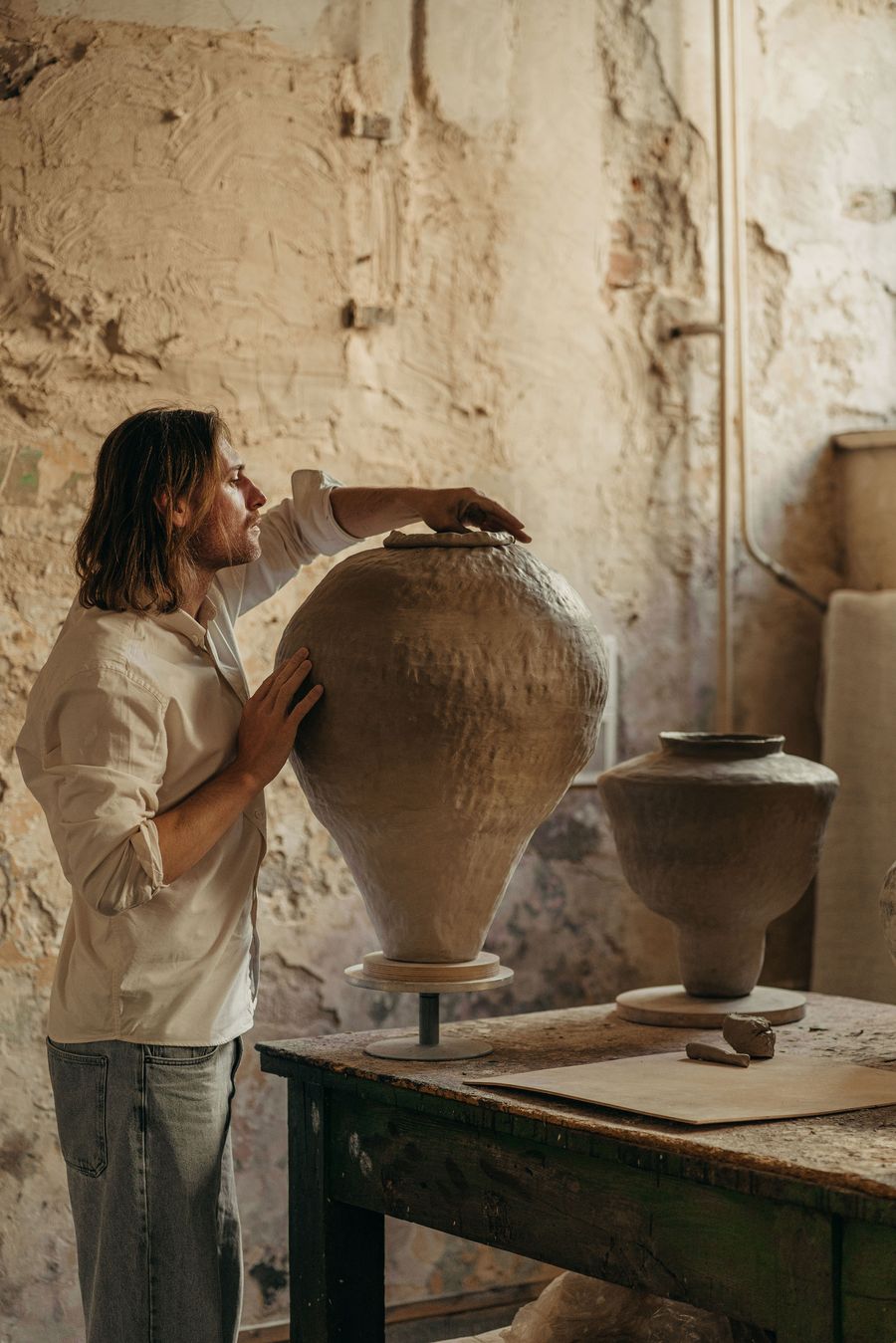
Marcin Kuberna at work in his studio. Photography by Mood Authors.
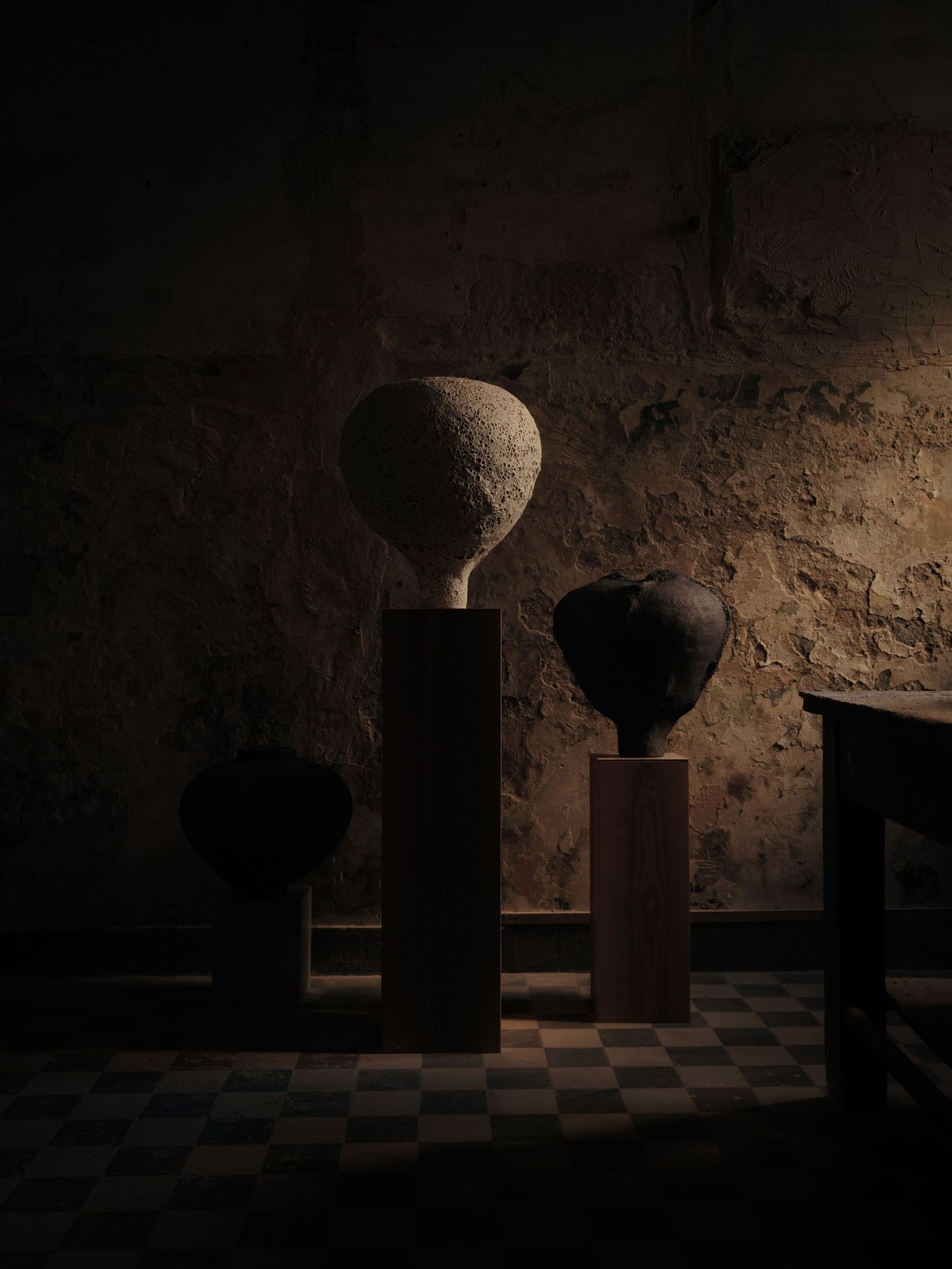
Ceramics by Marcin Kuberna. Photography by Bill Stamatopoulos.

Exhibition view, "Romantic Brutalism" by Visteria Foundation during Milan Design Week 2025. Photography by Ludovic Balay. Featured: Light installation by Dérive Studio; Wall art by Kasia Kucharska.
As Romantic Brutalism unfolds in Milan, it does more than showcase Polish craft and design—it asserts a cultural narrative that is deeply rooted yet constantly evolving. By revisiting and reinterpreting historical influences, this new generation of Polish designers is carving out a future where tradition and experimentation coexist, where the raw and the refined merge into something entirely new.
Following its debut in Milan, the exhibition will travel to Warsaw, where it will be presented at the historic Gawroński Villa—soon to become the permanent home of the Visteria Foundation and a private art and design museum, ensuring that the dialogue around Polish design continues beyond this momentous showcase.
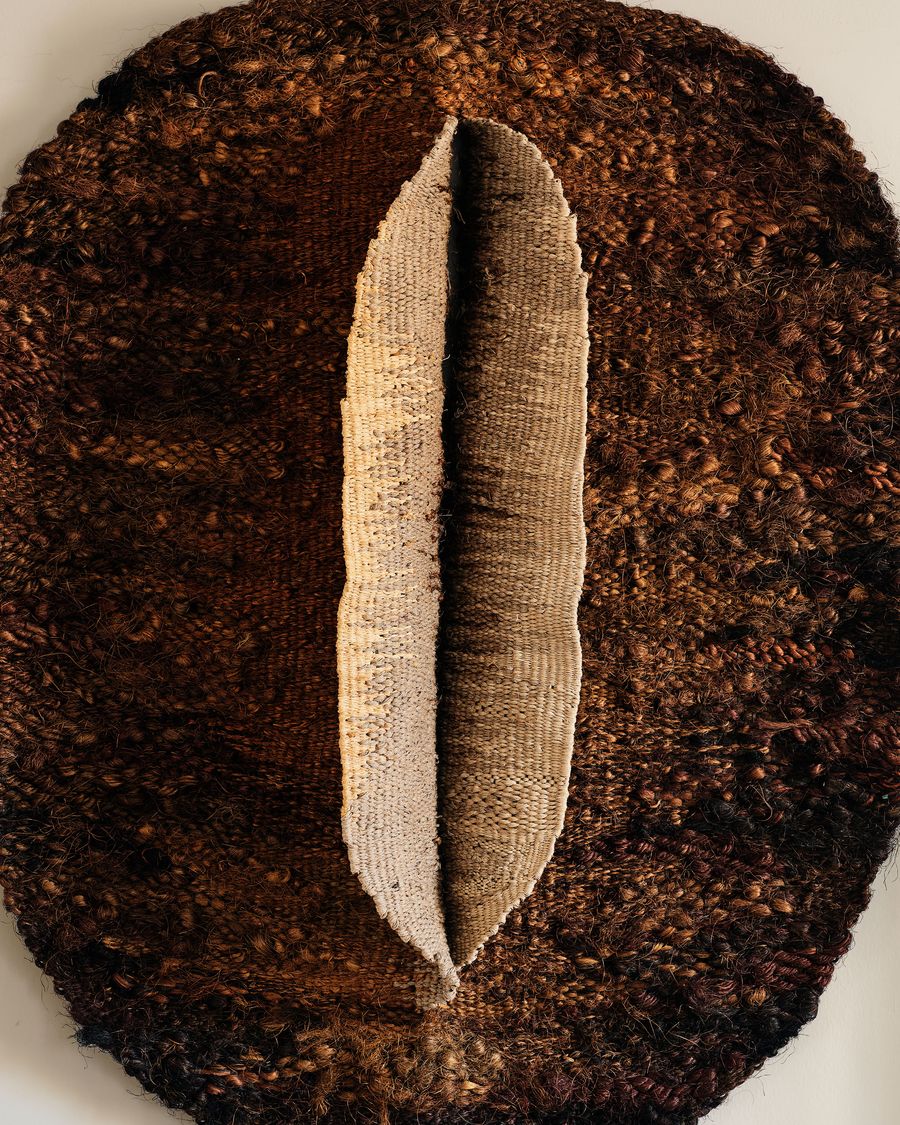
Exhibition view, "Romantic Brutalism" by Visteria Foundation during Milan Design Week 2025. Photography by Ludovic Balay. Featured: Brown Orchid by Magdalena Abakanowicz.
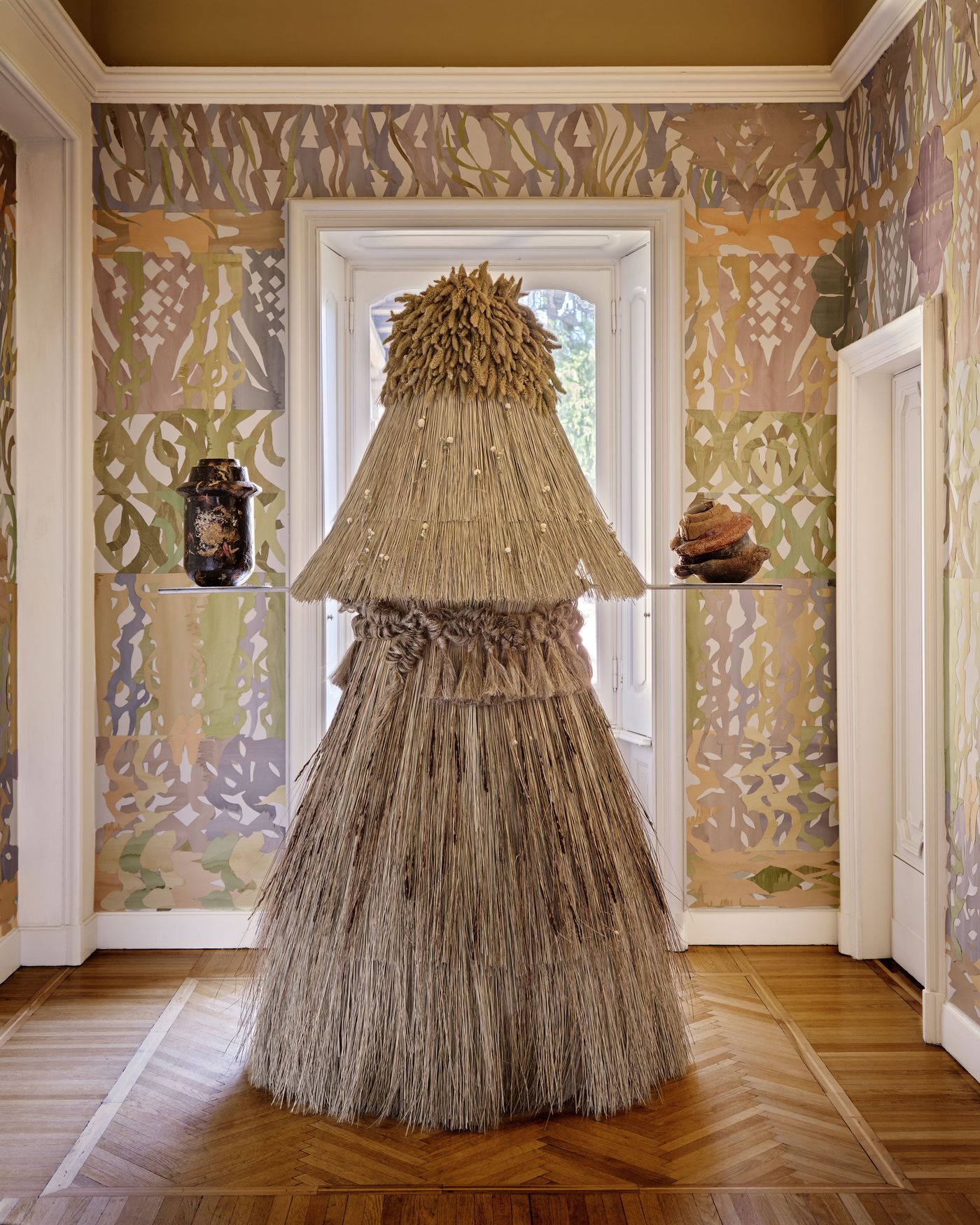
Exhibition view, "Romantic Brutalism" by Visteria Foundation during Milan Design Week 2025. Photography by Ludovic Balay.

